Let me write the article now following all the requirements.Creating an organized and functional entryway closet transforms your home's first impression while streamlining daily routines. A well-designed entryway closet serves as the command center for coats, shoes, bags, and essential items your family needs when coming and going. From interior details to inventive suggestions for entryway storage ideas, these design-led entryway closet ideas will inspire your scheme. Whether you're working with a small coat closet or designing a larger entryway space, these practical solutions will help you maximize storage while maintaining style and accessibility for every family member.
1. Entryway Closet Bench with Hidden Storage
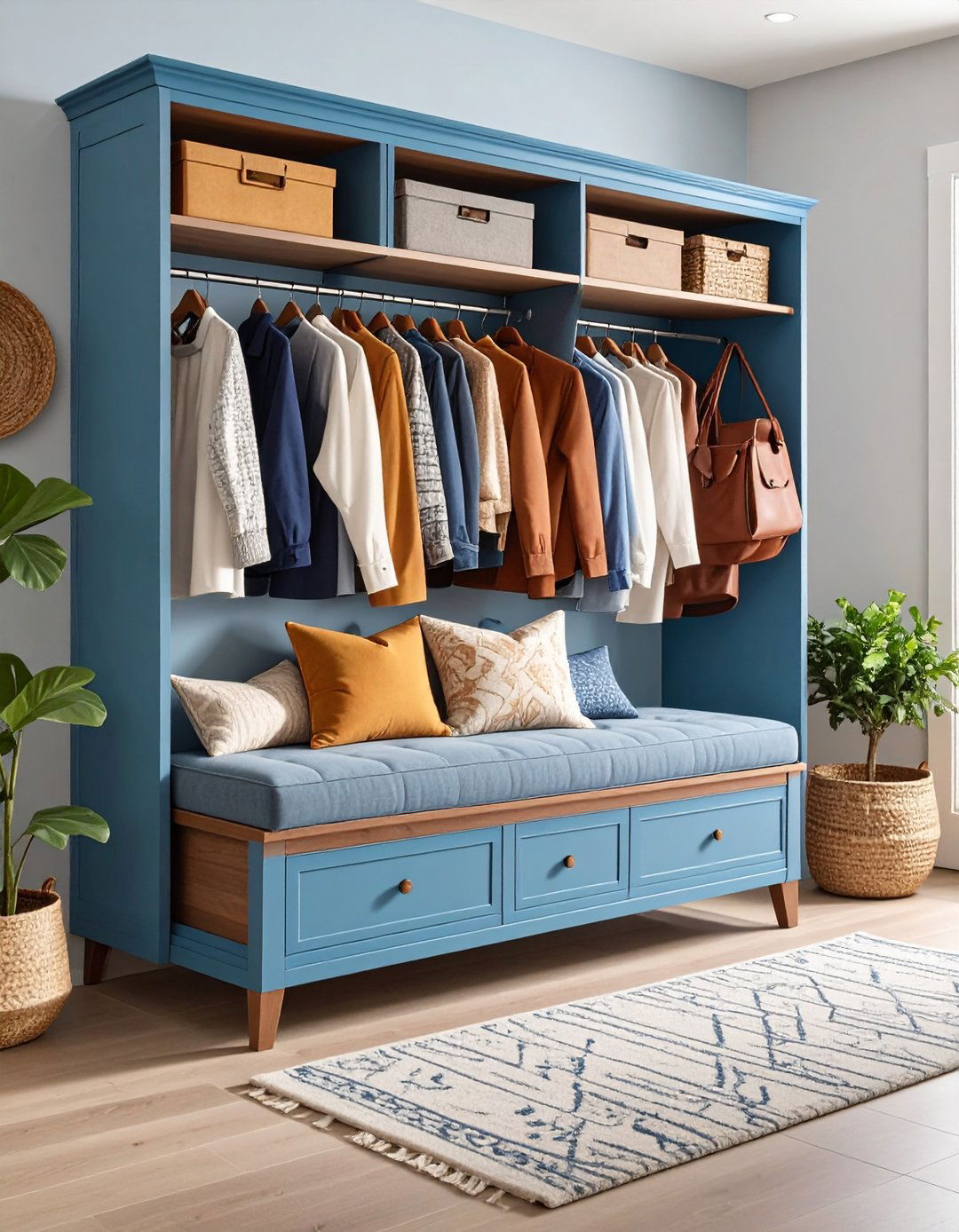
A storage bench transforms your entryway closet into a multifunctional space that serves as both seating and storage. If you want to ensure you are getting the very most out of your hallway, design your closet seating with storage beneath. This could be in the form of drawers, or beneath an upholstered lift-up lid. Install a custom-built bench with flip-up compartments to store seasonal items like gloves, hats, and scarves. The bench surface provides convenient seating for putting on shoes, while the hidden storage keeps clutter out of sight. Choose weather-resistant materials and add cushions for comfort, creating a welcoming transition space that handles the daily wear and tear of family life.
2. Entryway Closet Vertical Shoe Storage

Utilizing vertical space in a small closet can be a real game changer, and we're not just talking walls either. Install floor-to-ceiling shoe racks or stackable shoe cubbies to maximize your entryway closet's capacity. Tiered shoe storage keeps footwear organized and easily accessible while preventing the pile-up that typically occurs on closet floors. Consider clear shoe boxes for easy identification or open shelving that displays shoes neatly. This vertical approach works particularly well for families with multiple shoe sizes, allowing you to designate specific levels for adults, children, and seasonal footwear like boots and sandals.
3. Entryway Closet Hook and Basket System
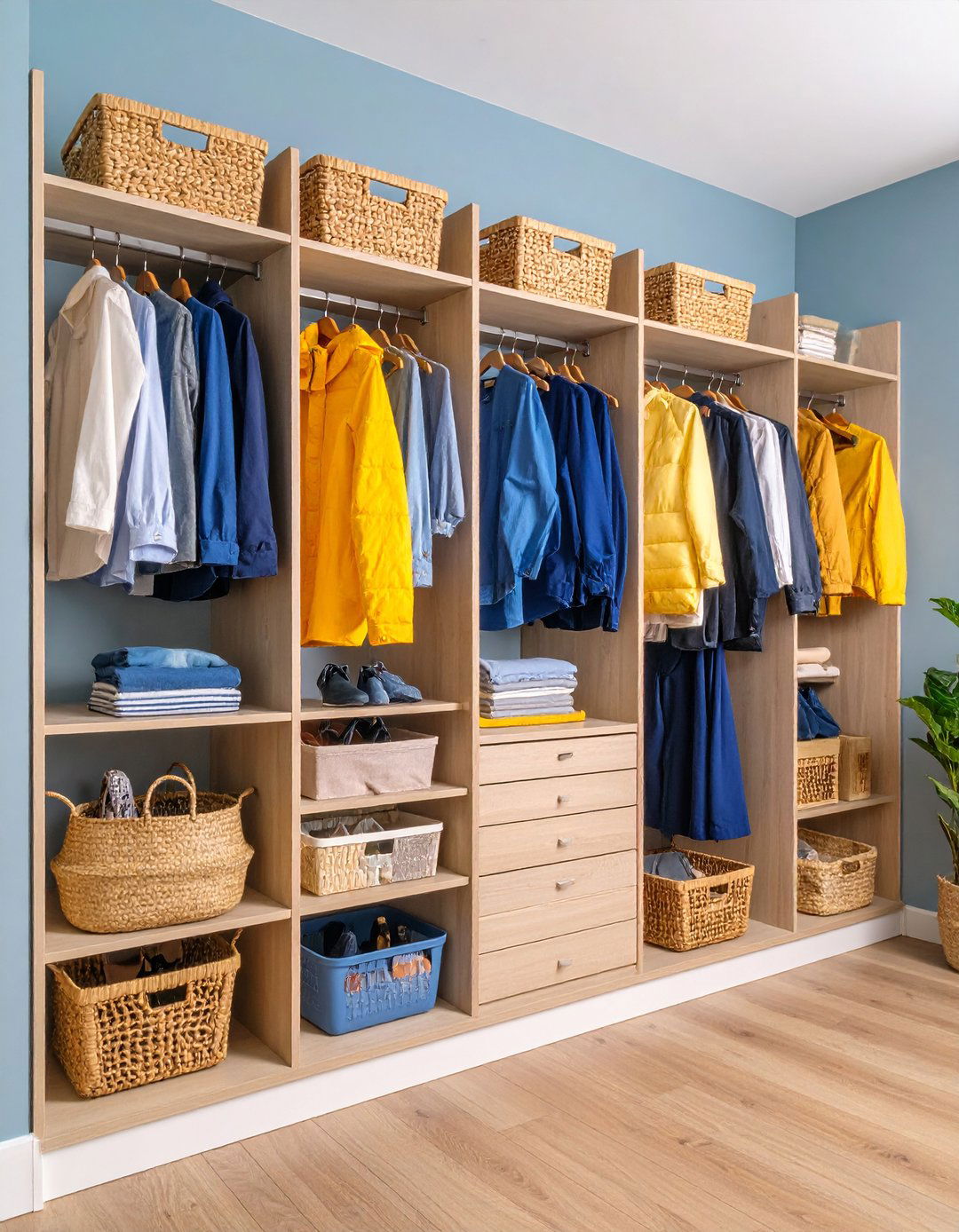
Create designated zones within your entryway closet using a combination of hooks and baskets for maximum organization efficiency. Good storage makes or breaks an entryway – and you can never have enough hooks, hangers, cupboard and cubbies to keep all your kit in place. Install hooks at varying heights to accommodate different family members and hang wire baskets for smaller items like gloves, dog leashes, and keys. This system allows for quick grab-and-go access while maintaining visual organization. Label each basket to ensure items return to their designated spots, creating a sustainable organization system that works for busy families.
4. Entryway Closet Makeover with Custom Shelving
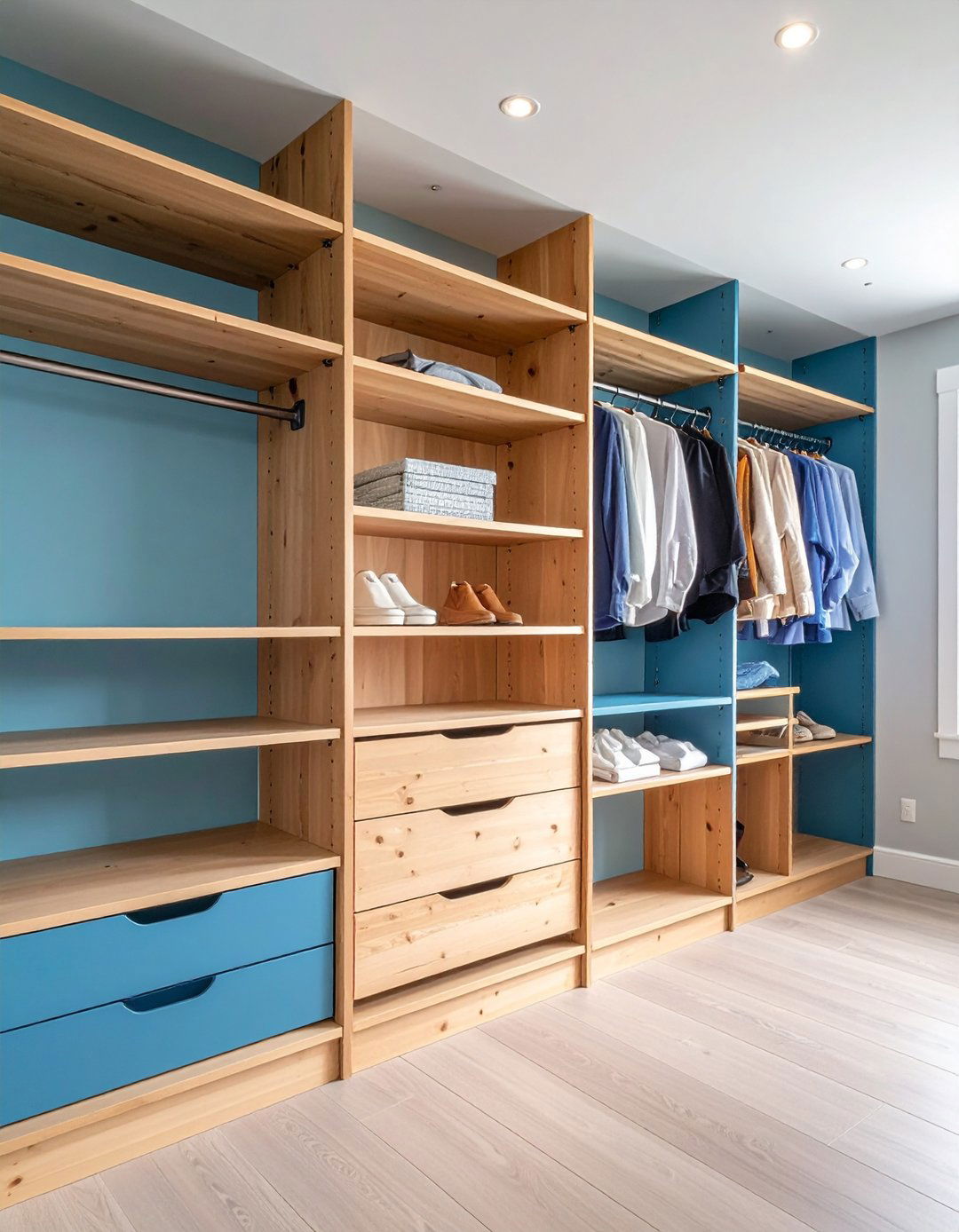
Replace standard wire shelving with custom wood shelves to create a more functional and attractive entryway closet. Using 1x12s, build bench frame as shown in diagram. We used a Kreg Jig and 1-1/4" pocket hole screws, but predrilled wood screws (2" length) will work as well. Design shelves of varying heights to accommodate different items, from tall boots to small accessories. Add support brackets and ensure shelves are deep enough for your storage needs. Paint or stain the shelving to match your home's aesthetic while providing durable storage that can handle heavy items like winter coats and sports equipment.
5. Entryway Closet Door Removal for Open Storage
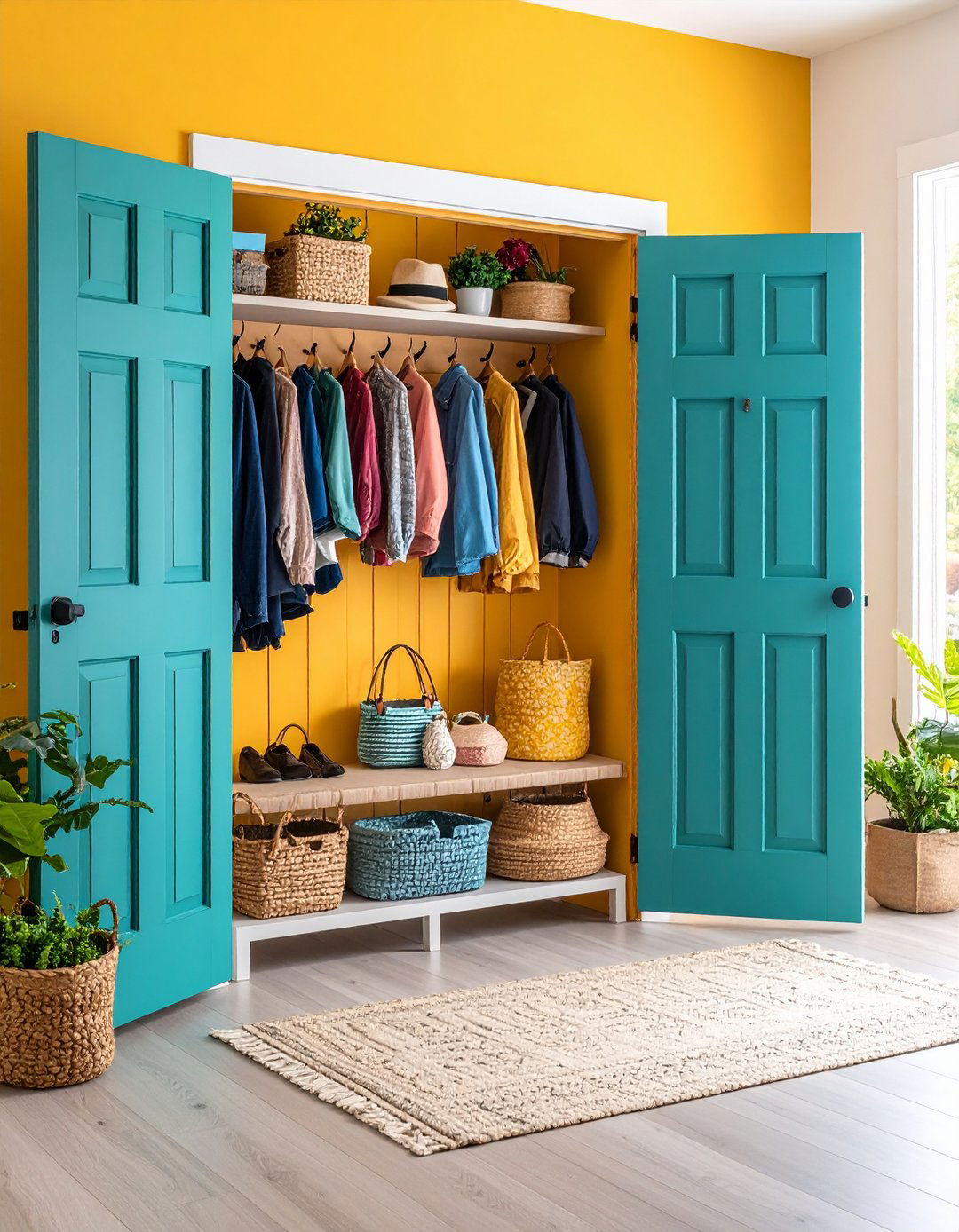
Transform your traditional entryway closet by removing the doors and creating an open storage nook. If all you have is an entryway or hall closet, consider removing the doors to maximize your small space. Install hooks, baskets, shelves, and even a bench to transform this spot into a mudroom closet. This approach makes the space feel larger and more accessible while encouraging family members to actually use the organizational systems. Add decorative elements like wallpaper or paint to the back wall, creating a focal point that's both functional and stylish. Install proper lighting to ensure the space remains well-lit and inviting.
6. Entryway Closet Under-Stairs Conversion
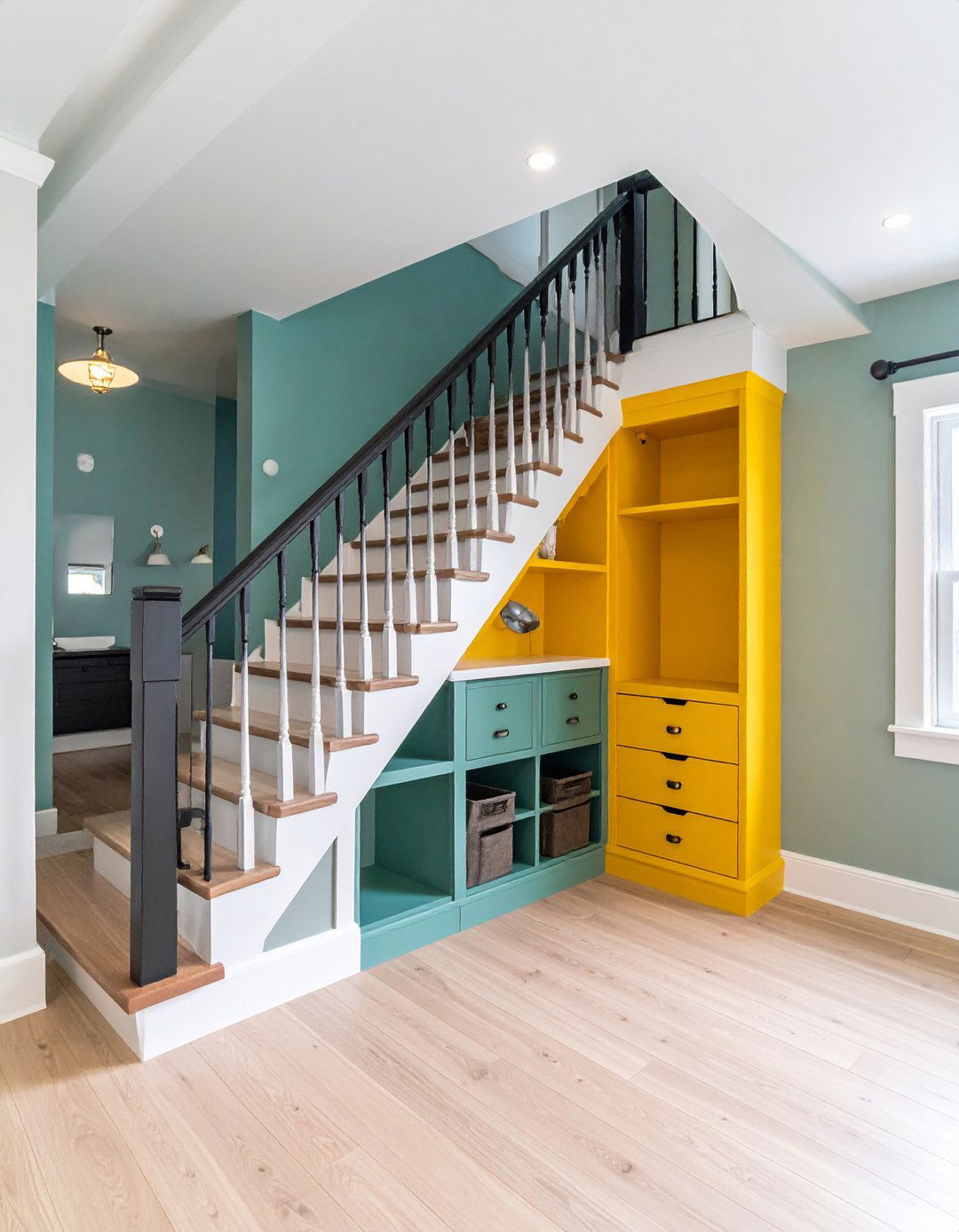
Utilize the often-wasted space under your staircase by converting it into an efficient entryway closet. This is where built-in closets come in handy, particularly if you can squeeze them in under your staircase — a spot that often gets wasted. The varying height under stairs creates natural zones for different storage needs – tall items like coats near the higher end and shoes or boots in the lower sections. Install pull-out drawers for easy access to items stored in the back, and consider adding a small bench if space allows. This conversion maximizes unused space while creating a discreet storage solution.
7. Entryway Closet Family Cubby System
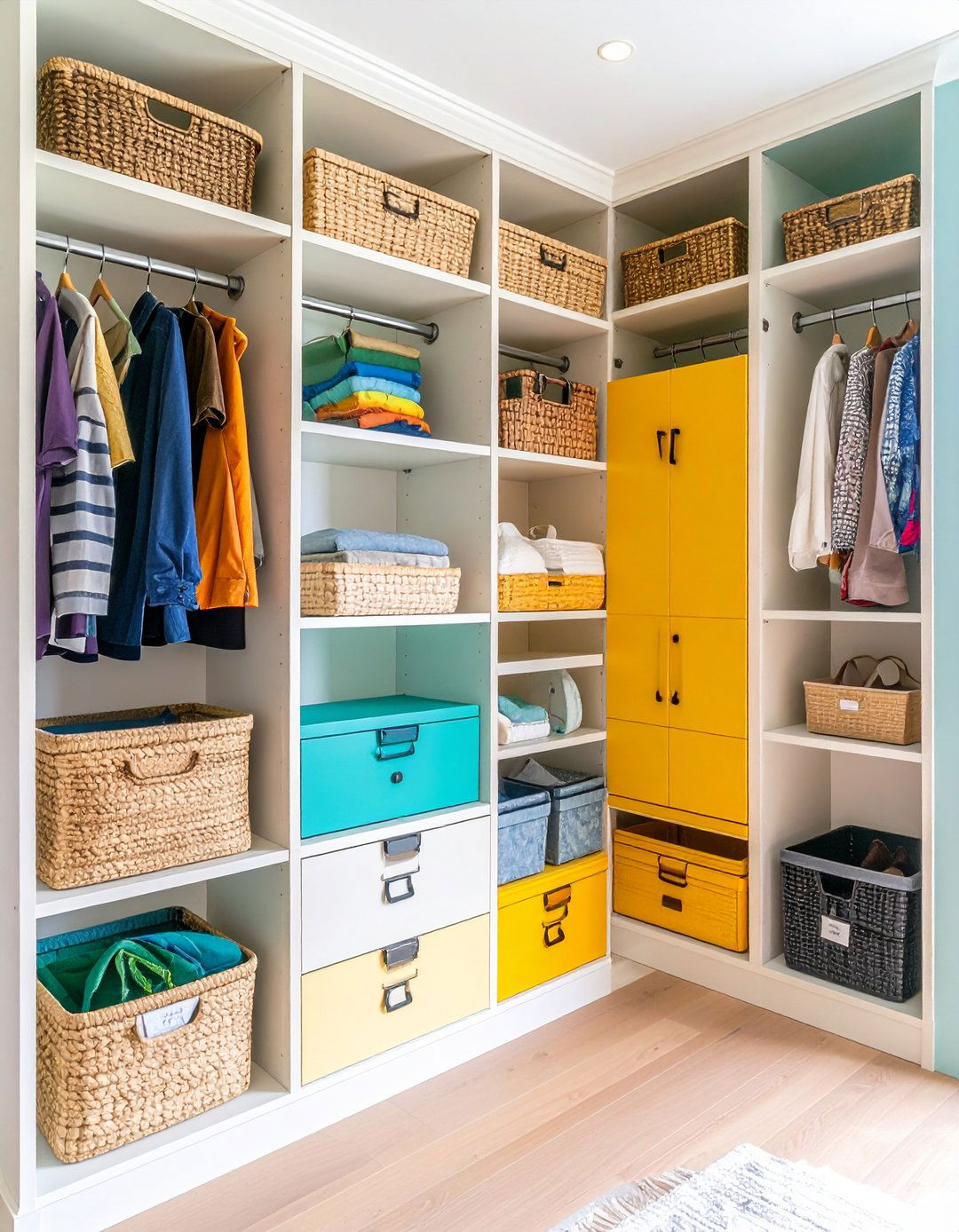
Design individual storage cubbies for each family member to eliminate confusion and encourage organization. Make sure that everyone has their own pull-out bin for gloves and hats," suggests Lianne Levy. It can also be a great idea to give each member of the household their own shelf, labeled with their name. Assign each person a cubby with their own hooks, shelf space, and basket for personal items. Label each section clearly with names or photos for younger children. This personalized approach teaches responsibility while preventing the mixing of belongings that often leads to morning chaos when searching for specific items.
8. Entryway Closet Boot Tray Organization

Protect your entryway closet floors and maintain cleanliness with strategic boot tray placement. Strategic mudroom shoe storage is the key to keeping your floors clean! Boots are often the biggest culprit of muddy shoe prints and wet spots. Stop puddles from spreading by purchasing or crafting your own DIY shoe tray. Install removable boot trays or mats that can be easily cleaned and dried. Choose materials like rubber or waterproof plastic that contain moisture and dirt. Position trays at floor level with adequate drainage, and consider having multiple trays for different seasons or family members to prevent cross-contamination of clean and dirty footwear.
9. Entryway Closet Ceiling-Height Storage
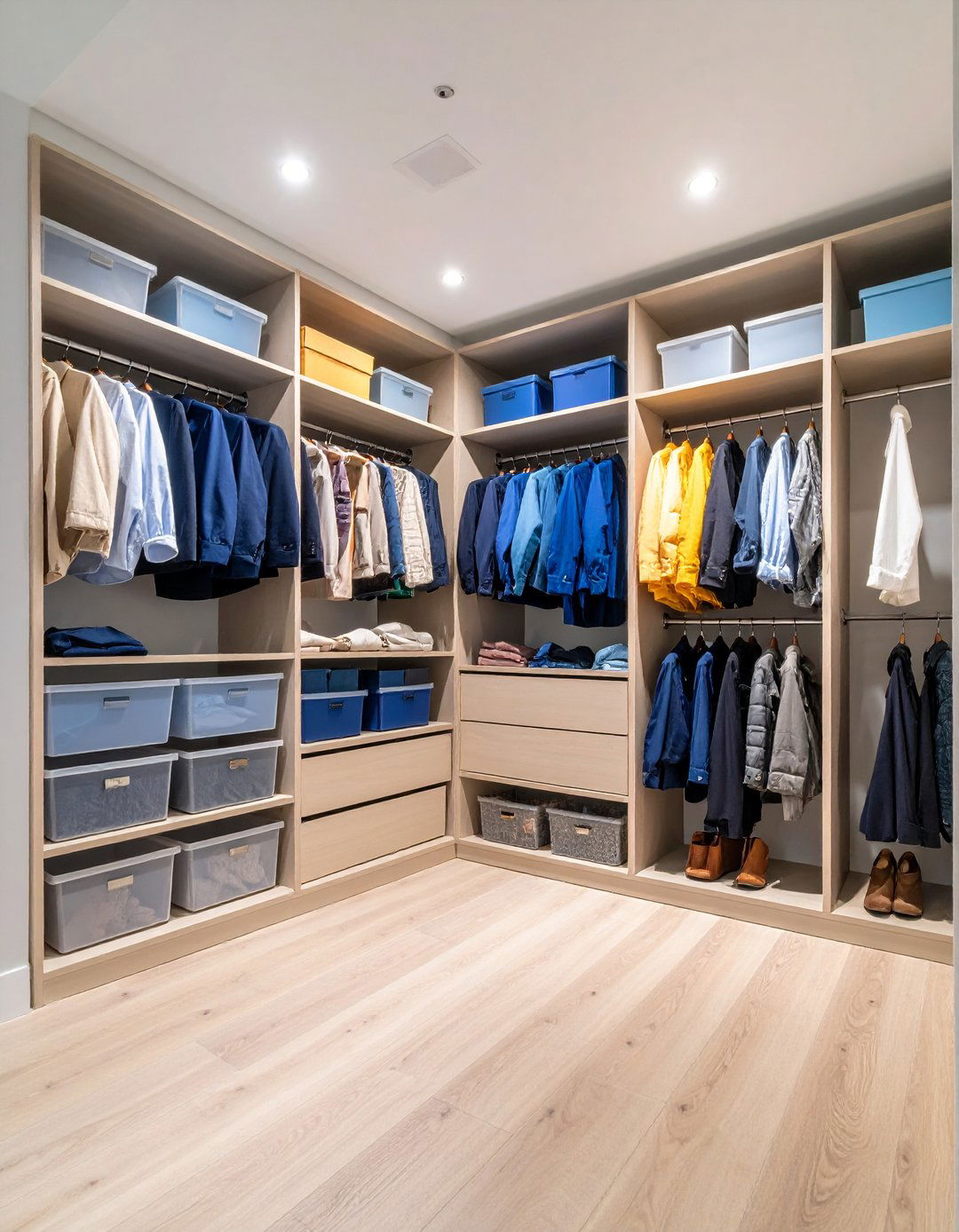
Maximize every inch of your entryway closet by installing storage solutions that reach from floor to ceiling. Depending on the height of your closet, you can feasibly create an extra three to four feet of usable storage space above your hanging rods by installing metro shelving, or another configurable shelving design. Use the upper areas for seasonal items that aren't accessed daily, while keeping frequently used items at eye level. Install a small step stool for safe access to higher shelves, and consider clear storage bins for easy identification of contents. This approach is particularly effective for storing out-of-season clothing and holiday decorations.
10. Entryway Closet Mudroom Conversion

Transform your basic entryway closet into a full-function mudroom with proper planning and installation. The hub of the home, a well-designed mudroom keeps everyone organized for a smooth start (or finish) to their day. Open storage provides quick access to items used daily. Add elements like coat hooks, shoe storage, umbrella holders, and mail sorting systems. Install proper ventilation to prevent moisture buildup and choose materials that can withstand wet and dirty items. Include amenities like a small mirror, key hooks, and even a charging station for devices, creating a comprehensive transition space.
11. Entryway Closet LED Lighting Solution

Illuminate your entryway closet with modern LED lighting to improve functionality and appeal. And, one of my favorite touches in the entire closet is the motion-activated lighting – it's powered by a rechargeable battery, so no plug is required, and the strips give the perfect amount of light for this dark little space. Install battery-powered LED strips under shelves or motion-activated lights that automatically illuminate when the closet is accessed. This improvement makes it easier to find items quickly and creates a more welcoming space. Consider strip lighting along the sides or back wall to eliminate shadows and provide even illumination throughout the storage area.
12. Entryway Closet Over-the-Door Storage
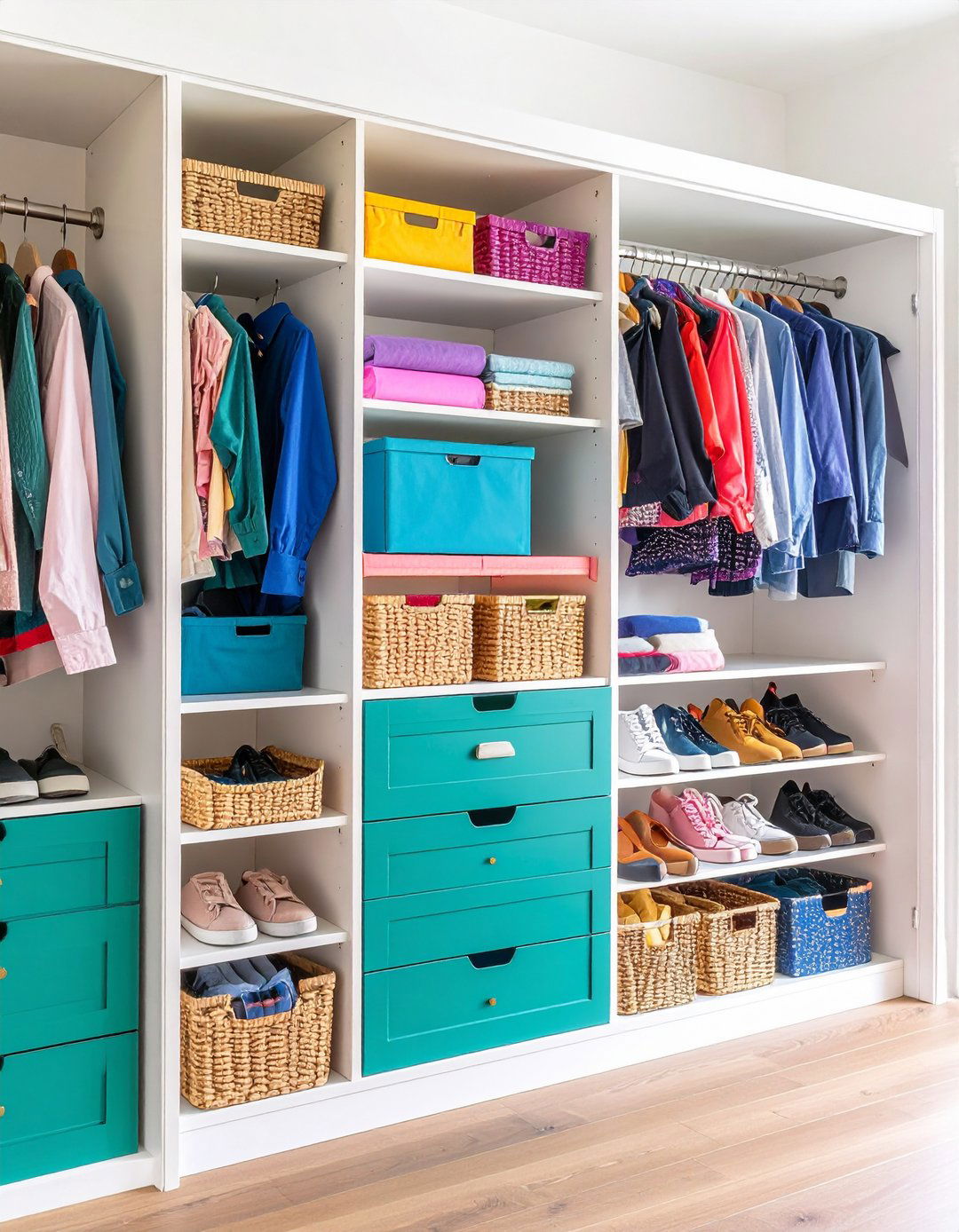
Maximize your entryway closet capacity by utilizing the back of the door for additional storage opportunities. From over-the-door pocket organizers, like this organizer from Target, to simple Command Hooks for holding coats, purses, and bags, sensible small entryway storage ideas employed on the back of the door have the potential to effectively double your small closet's capacity. Install over-the-door shoe organizers, pocket systems, or simple hooks to store frequently used items. This space works well for accessories like scarves, hats, umbrellas, or dog leashes. Choose organizers with clear pockets for easy visibility and ensure the door can still close properly with the added storage.
13. Entryway Closet Two-Level Hanging System
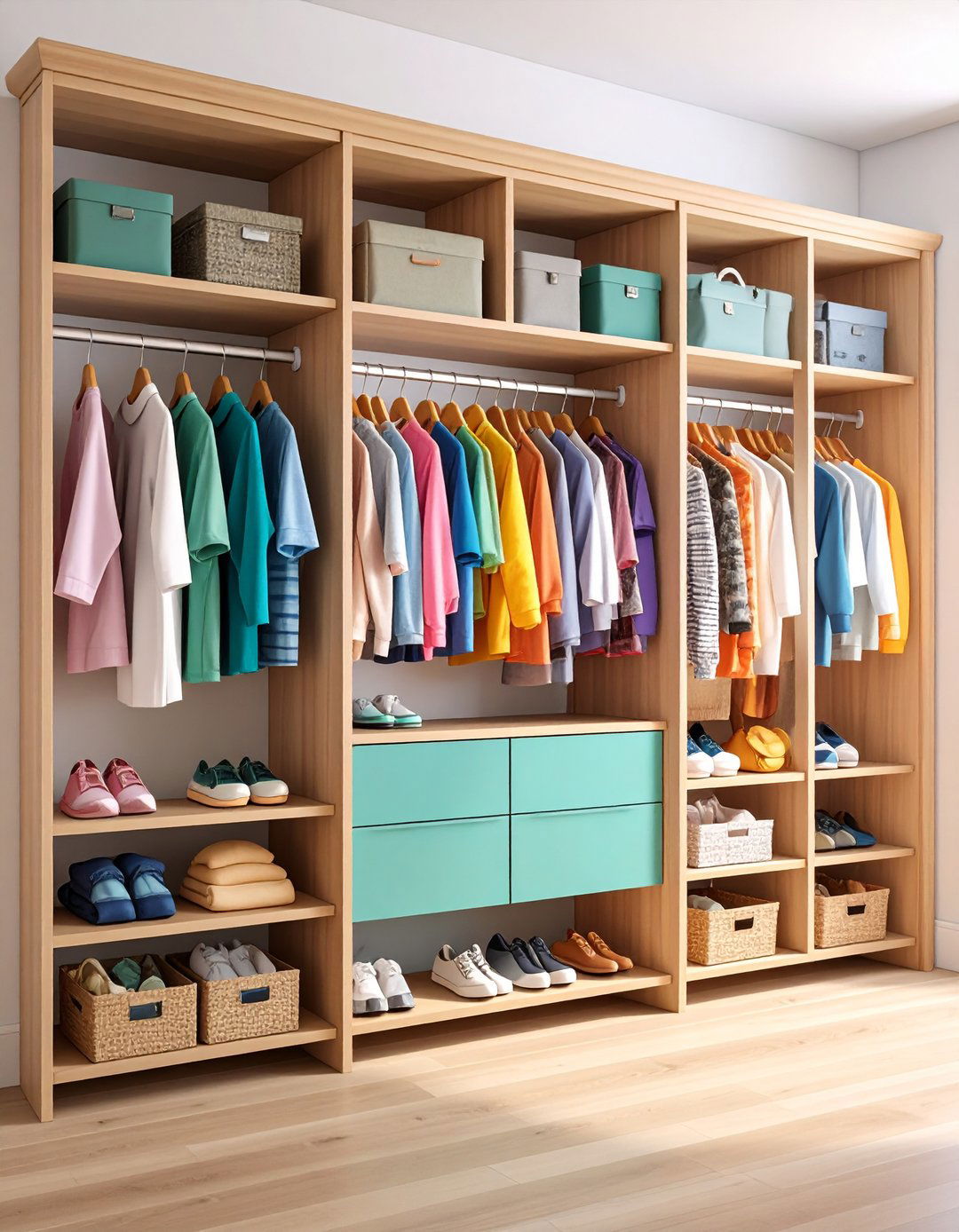
Create more hanging space in your entryway closet by installing a double-rod system with rods at different heights. One of the first suggestions was to put coats on the bottom. You can stand up straight and still get your coats from the bottom (think of a walk in closet with two bars), easy peasy. And then shoes will be eye level. This configuration works particularly well for families with children, allowing lower rods for kids' clothing and higher rods for adult items. The space between rods can accommodate shoe storage or baskets for accessories. This system essentially doubles your hanging capacity while maintaining easy access for all family members.
14. Entryway Closet Basket and Label Organization
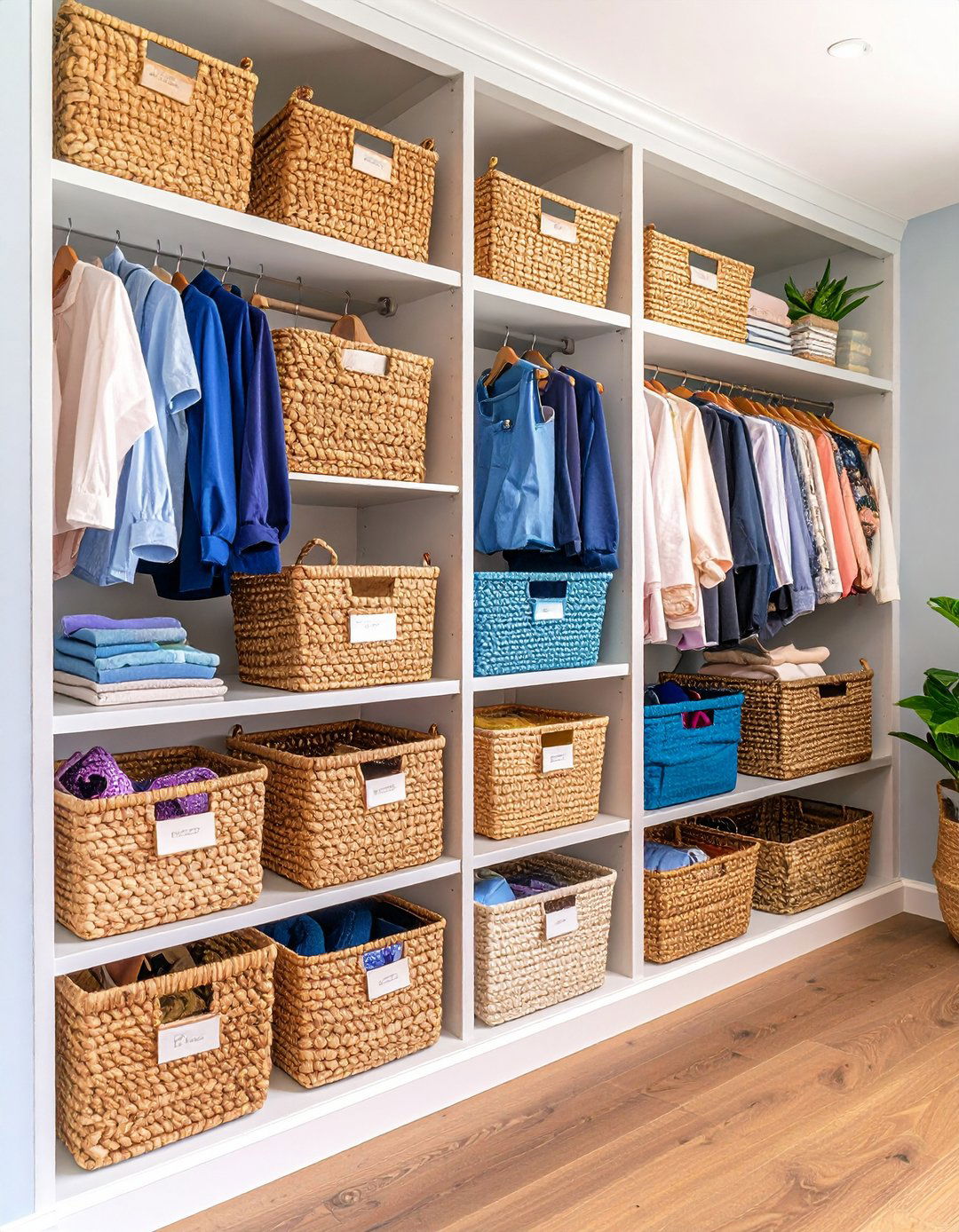
Implement a comprehensive basket and labeling system to maintain long-term organization in your entryway closet. One of the first steps you should take to tidy up your entryway closet is to find or purchase a set of baskets and bins. Instead of tossing your grocery bags on the closet floor or chucking your caps on the shelf, use a set of storage containers. Choose uniform baskets that fit your shelving and label each one clearly for its designated contents. Group similar items together – sports equipment, seasonal accessories, or cleaning supplies. This system prevents items from becoming scattered and makes it easy for family members to maintain organization independently.
15. Entryway Closet Seasonal Storage System
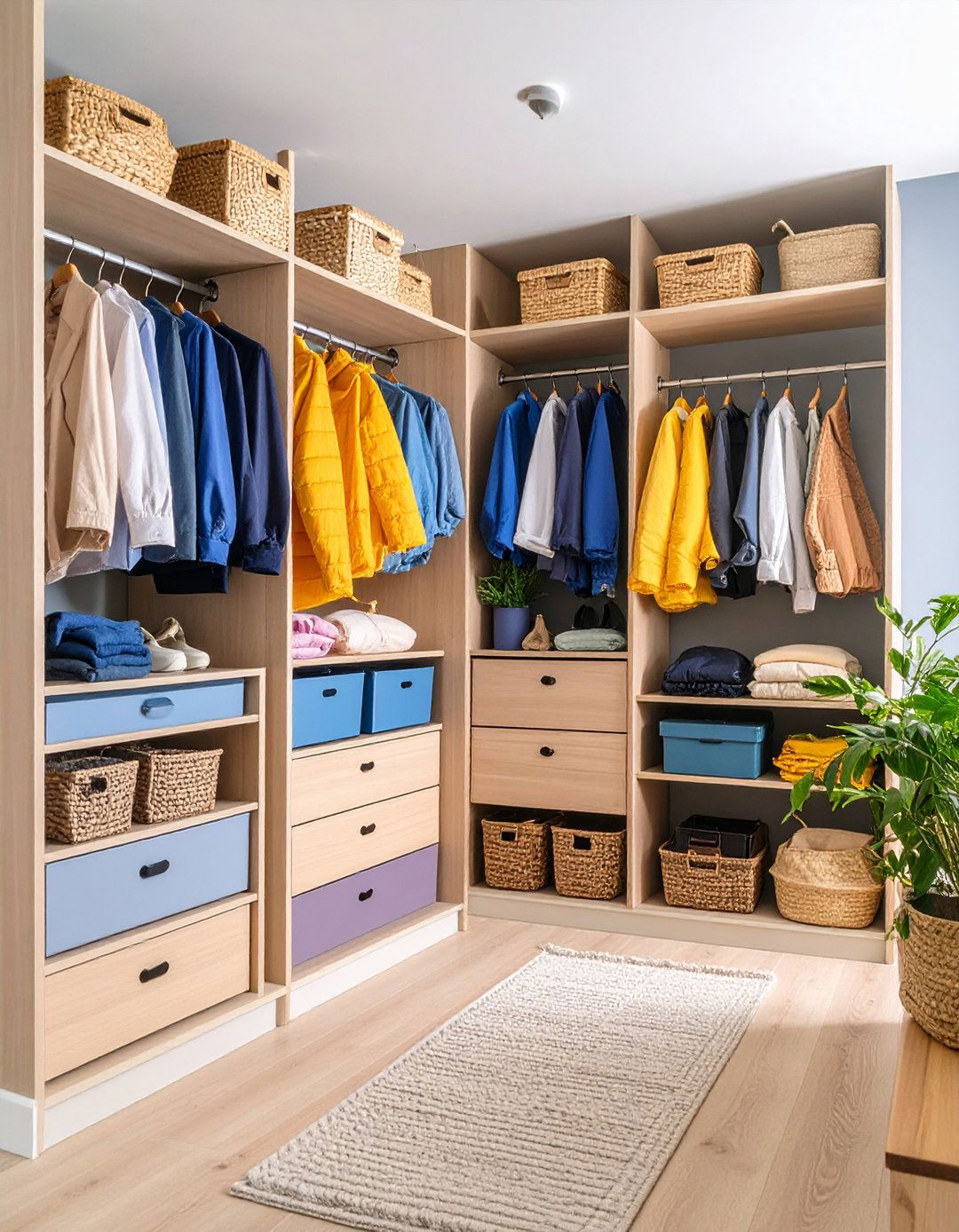
Design your entryway closet to efficiently handle seasonal rotation of clothing and accessories throughout the year. Your entryway storage needs to change with the seasons. In winter, you might have a collection of hats, gloves, and scarves, while in summer, you're more likely to have sunscreen, sunglasses, and beach towels. Use clear, labeled bins for off-season items and store them on higher shelves or in less accessible areas. Create a rotation schedule to swap out seasonal items, ensuring that current-season necessities are always within easy reach. This approach prevents overcrowding and maintains functionality year-round.
16. Entryway Closet Coat and Shoe Combo
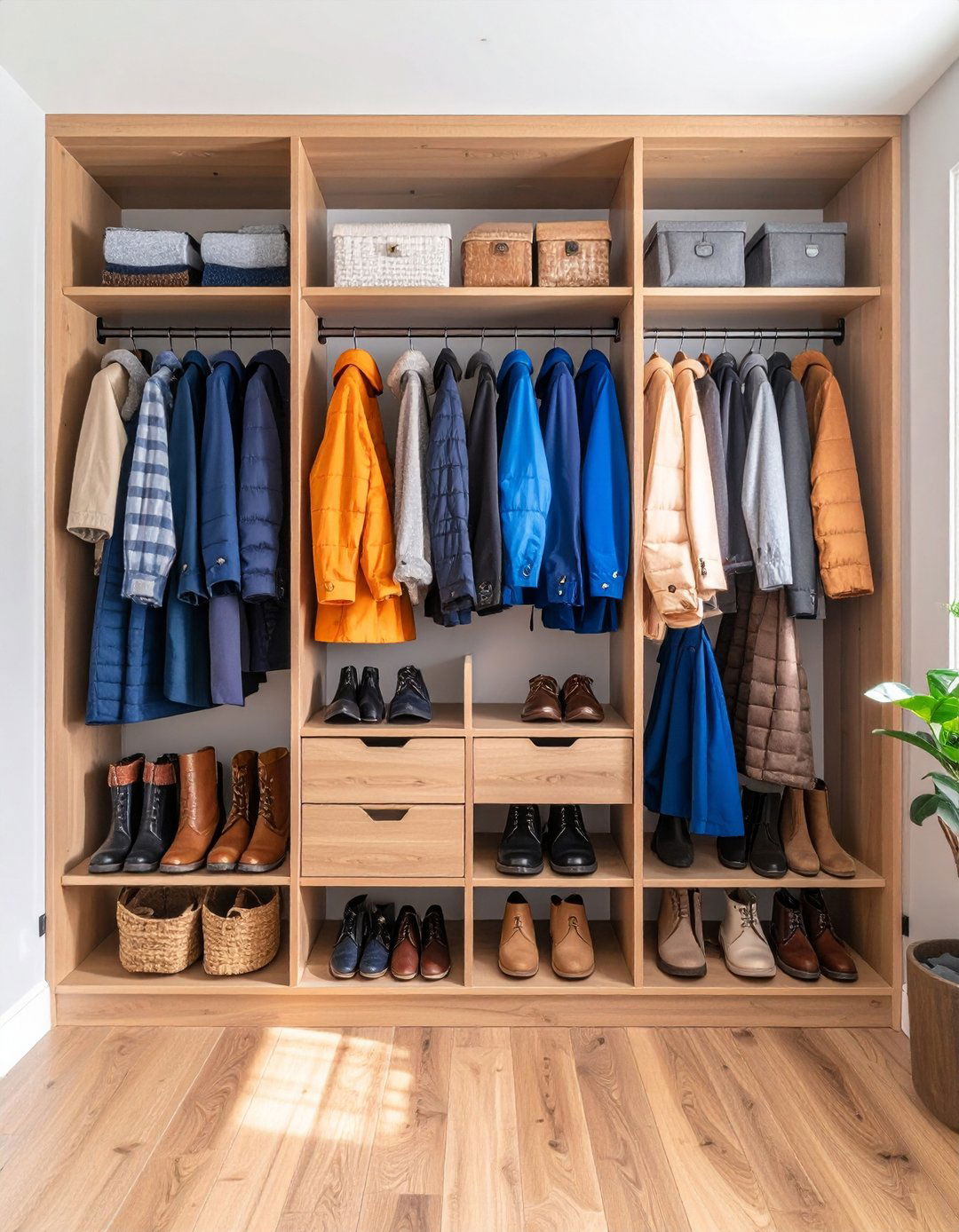
Create an integrated system that pairs coat storage with corresponding shoe storage for ultimate convenience. Opt for a coat rack that serves double duty. This one provides plenty of hooks for keeping everyone's outerwear nice and organized but also features a shoe shelf that will help keep sneakers off the ground but still easily within reach. Position shoe storage directly below coat hooks or hanging areas so family members can access complete outfits efficiently. This pairing reduces morning preparation time and ensures that coordinated items stay together. Consider weather-appropriate pairings, such as rain boots stored beneath raincoats.
17. Entryway Closet Wall-Mounted Storage
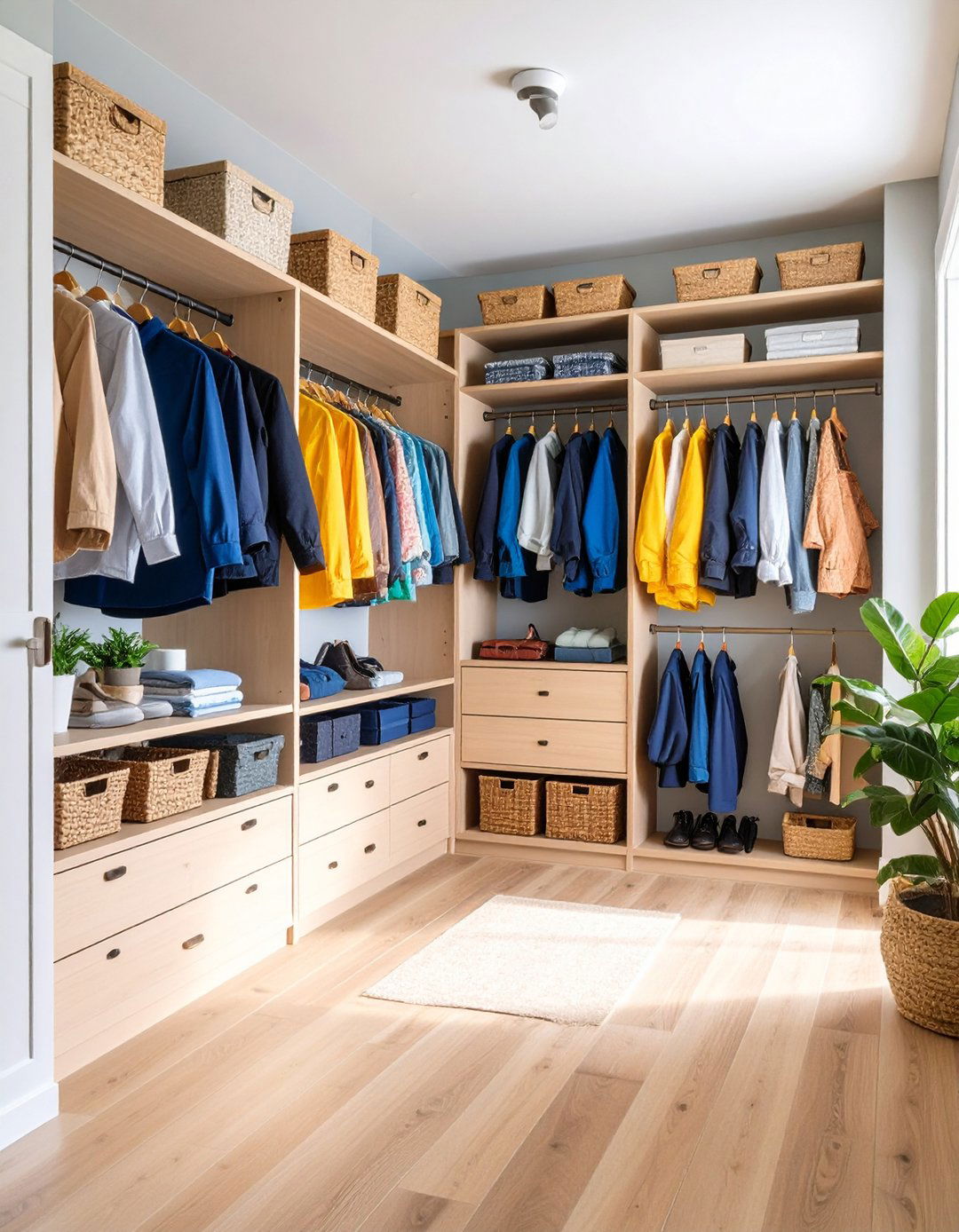
Utilize wall space efficiently with mounted storage solutions that keep the floor clear and maximize accessibility. Short on space? Make the most of small mudroom organization by mounting shelving on the wall! If you're adding shelving to an entryway, consider an option with doors to help hide clutter. Install floating shelves, wall-mounted cubbies, or hanging organizers that don't consume floor space. This approach works well in narrow closets or when you need to maintain clearance for larger items below. Choose mounting systems that can support the weight of your stored items and consider adjustable options for future flexibility.
18. Entryway Closet Pull-Out Drawer System

Install pull-out drawers in your entryway closet to improve access to stored items and maximize deep storage areas. If you're up for a DIY project, consider converting the empty area beneath a stairway step into a shoe storage pull-out drawer. This covert method makes the most of the available space in tiny houses without clogging obvious spaces. These drawers work exceptionally well for shoes, sports equipment, or seasonal accessories that might otherwise get lost in the back of deep shelves. Choose heavy-duty drawer slides that can handle regular use and varying weights. This system brings items to you rather than requiring you to reach into dark corners.
19. Entryway Closet Console Table Integration
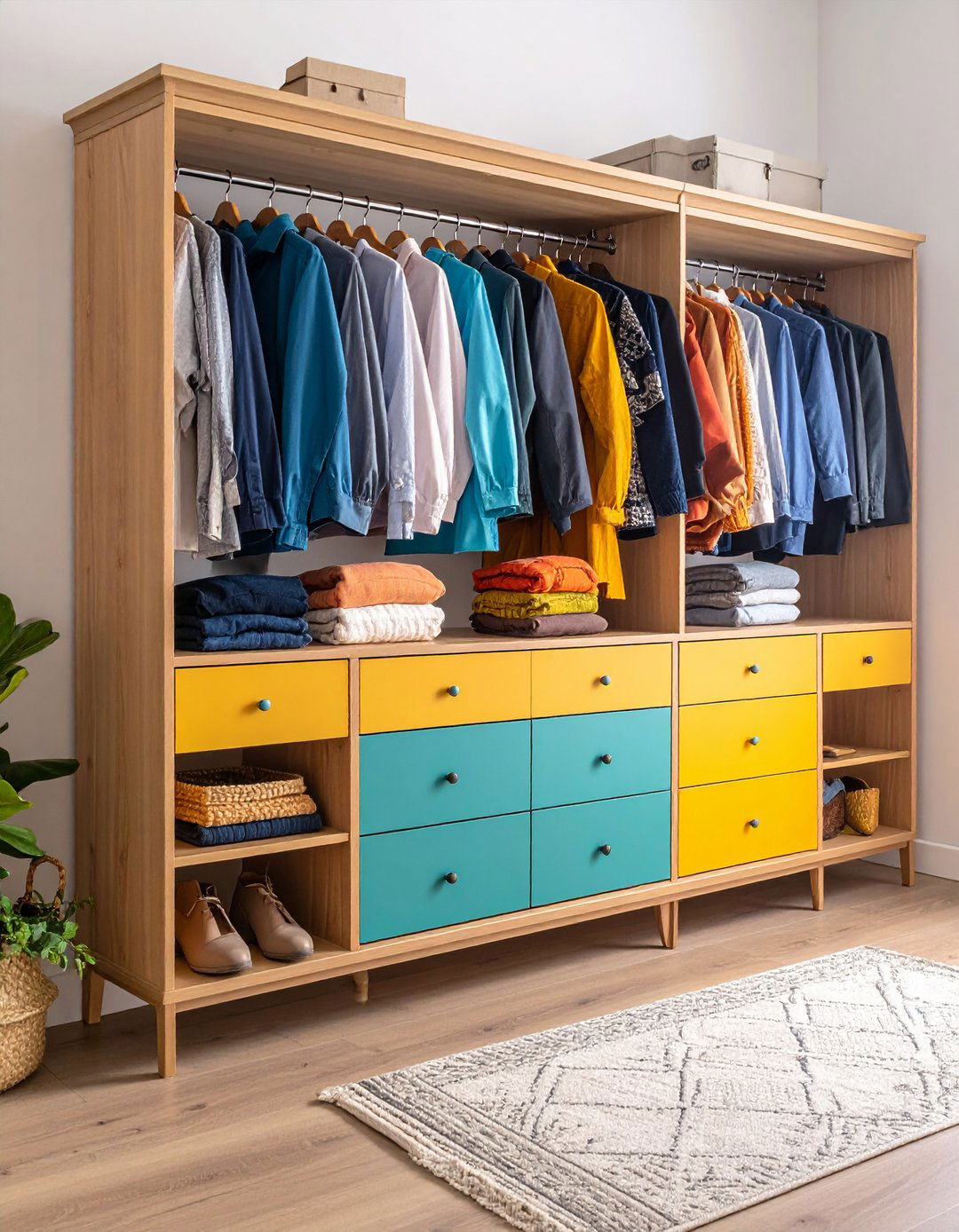
Incorporate a narrow console table into your entryway closet design to create a landing zone for daily essentials. Console tables are both a stylish addition to your decor and a functional workhorse that can help keep your entryway tidy and organized. Imagine a sleek, elegant table gracing your hallway, offering a convenient spot to drop your keys, mail. Position the table at an accessible height for keys, mail, sunglasses, and other grab-and-go items. Choose a table with drawers or lower shelving for concealed storage of items like charging cables, spare batteries, or seasonal accessories. This addition creates a designated drop zone that prevents clutter from spreading throughout your home.
20. Entryway Closet Color-Coordinated Organization
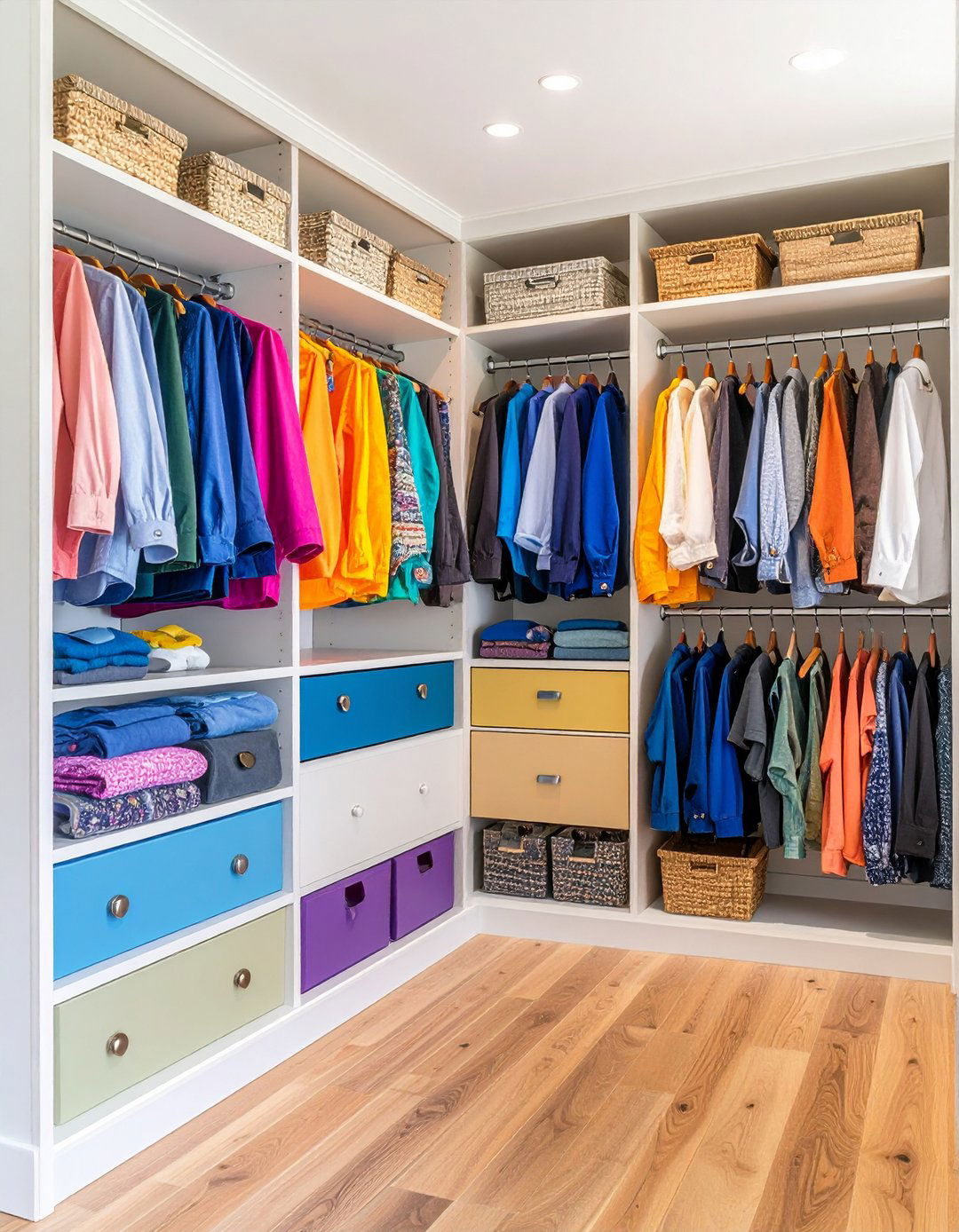
Implement a color-coding system throughout your entryway closet to enhance both organization and visual appeal. Looking for a super simple way to make your entryway closet look more organized? We have two words for you: color coordinate. This is another favorite tip among home organizers. Assign colors to different family members or categories of items, using colored bins, labels, or even hangers to maintain the system. This visual organization method makes it immediately clear where items belong and creates a more polished, intentional appearance. The color coordination also helps children and guests understand the organization system quickly.
Conclusion:
These twenty entryway closet ideas provide comprehensive solutions for transforming your home's entry point into an organized, functional, and welcoming space. From simple organizational systems using baskets and hooks to more complex renovations involving custom shelving and lighting, each approach addresses specific storage challenges while enhancing your daily routines. The key to success lies in selecting ideas that match your family's lifestyle, available space, and budget while creating sustainable systems that encourage long-term organization and maintenance.


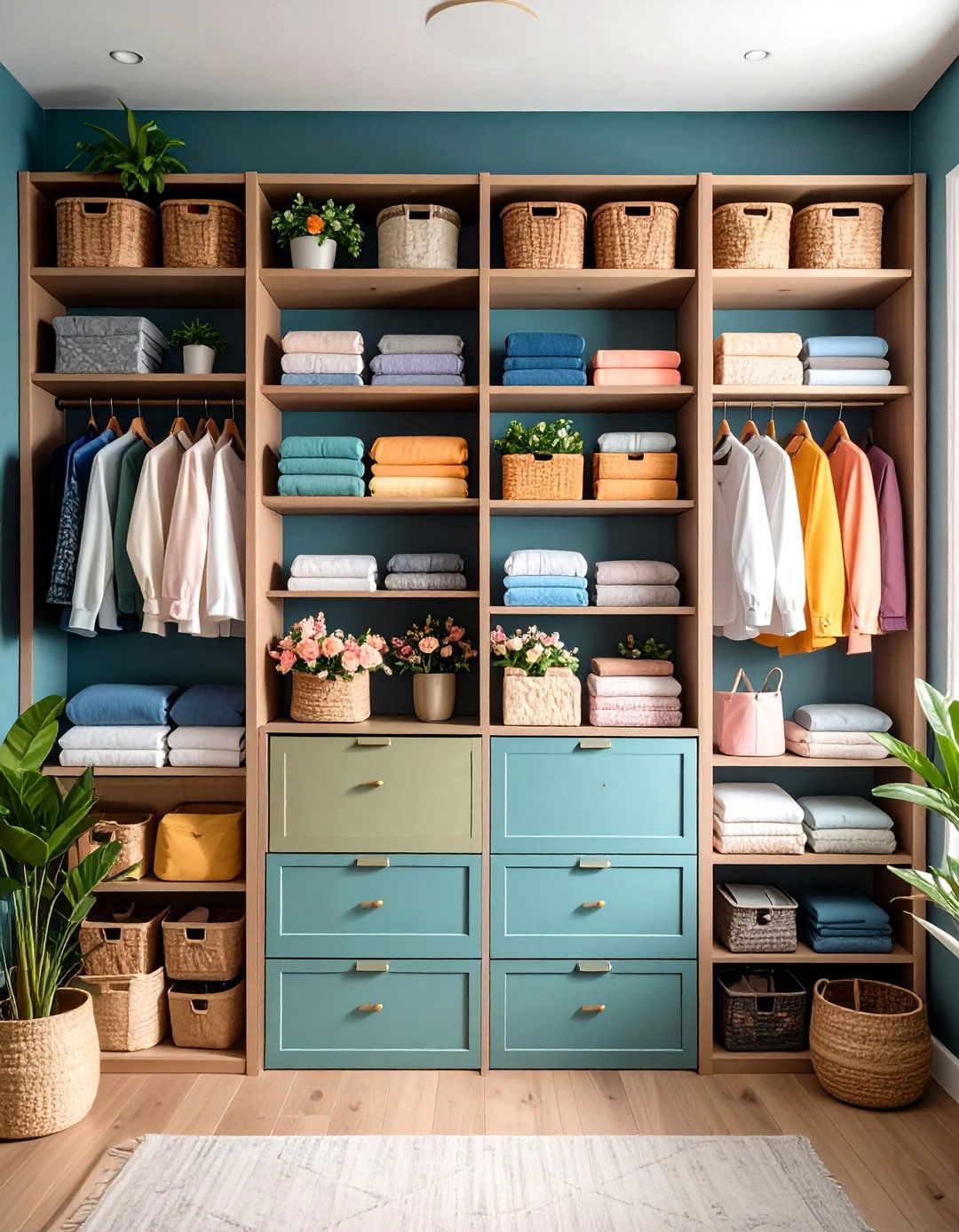
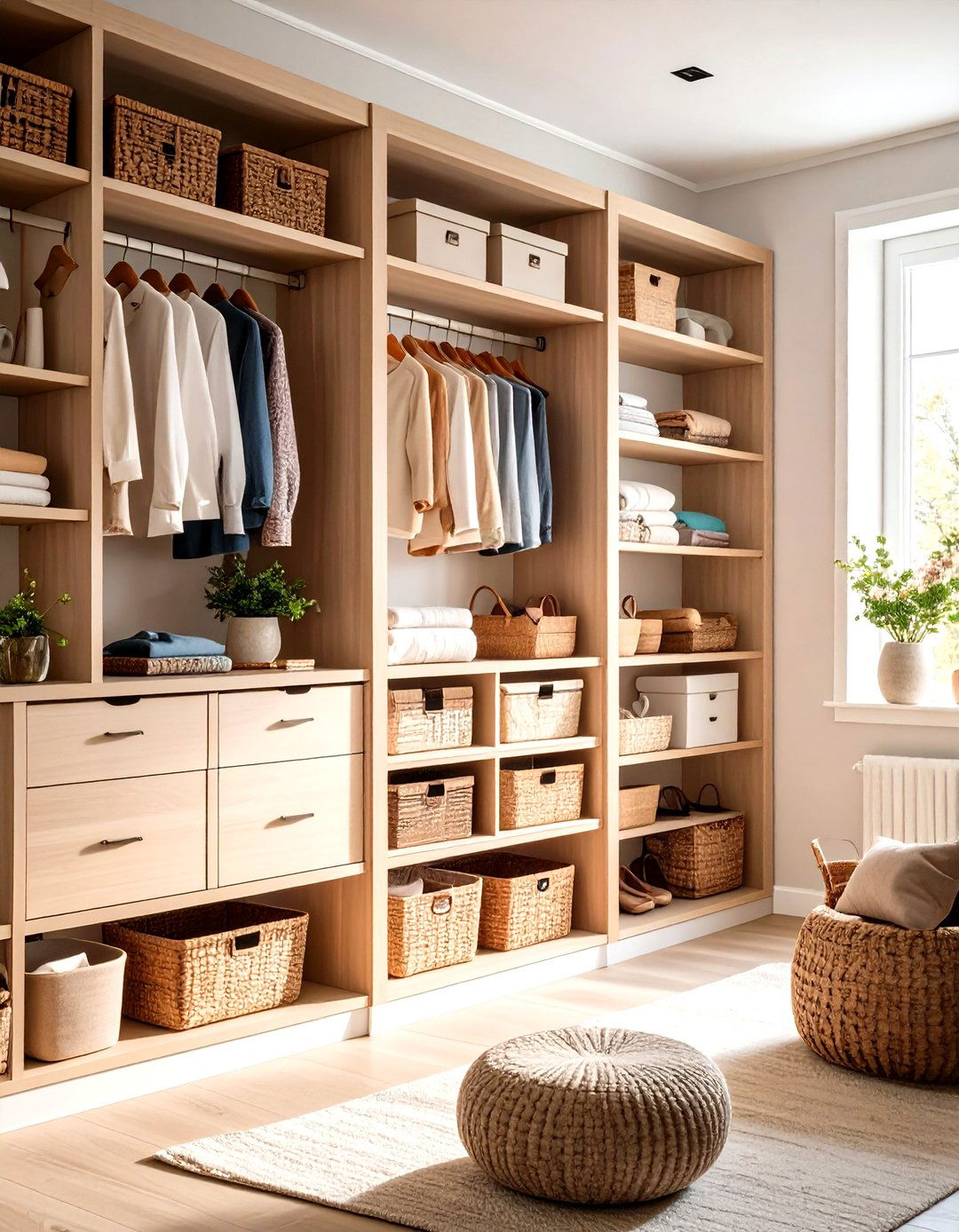
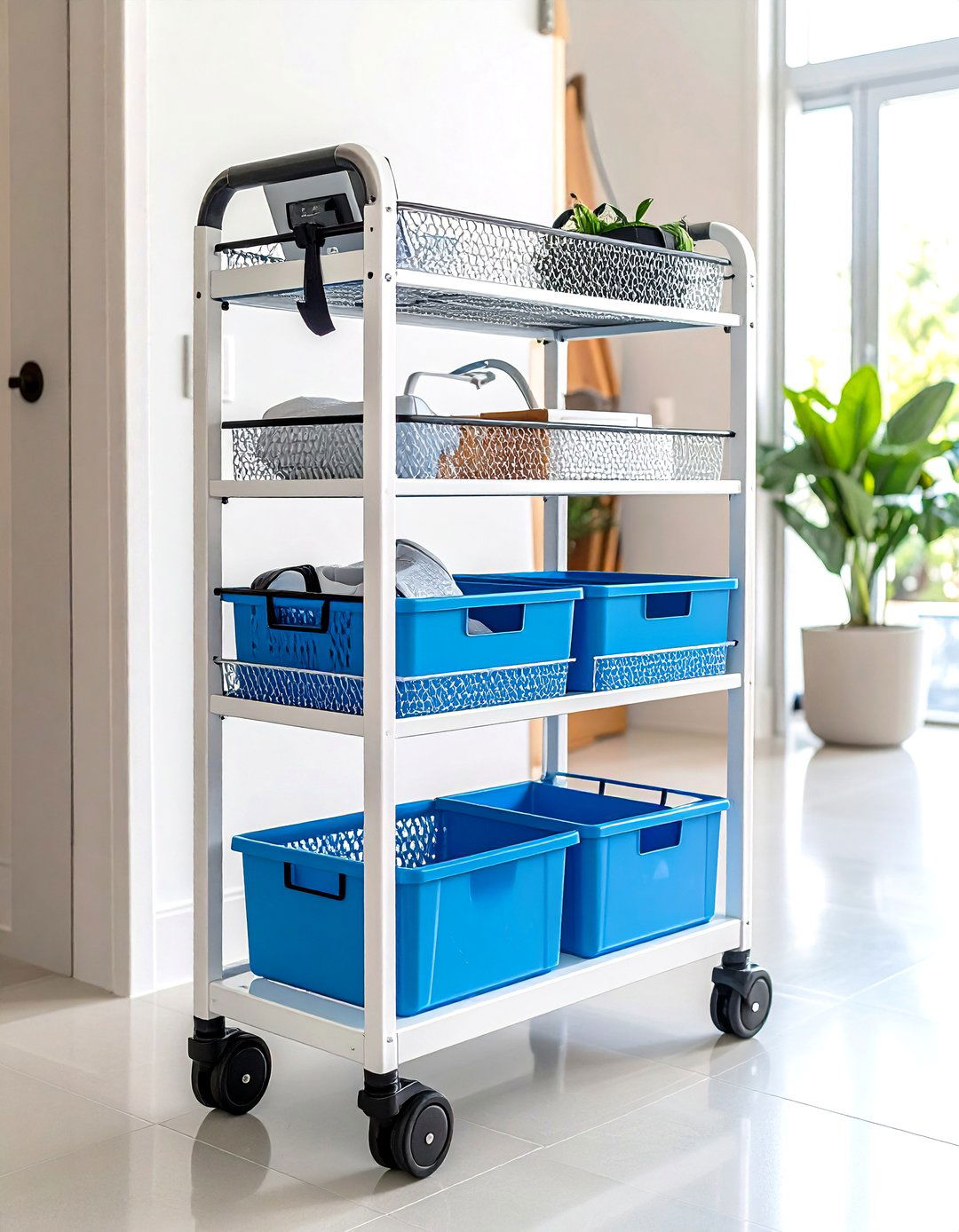

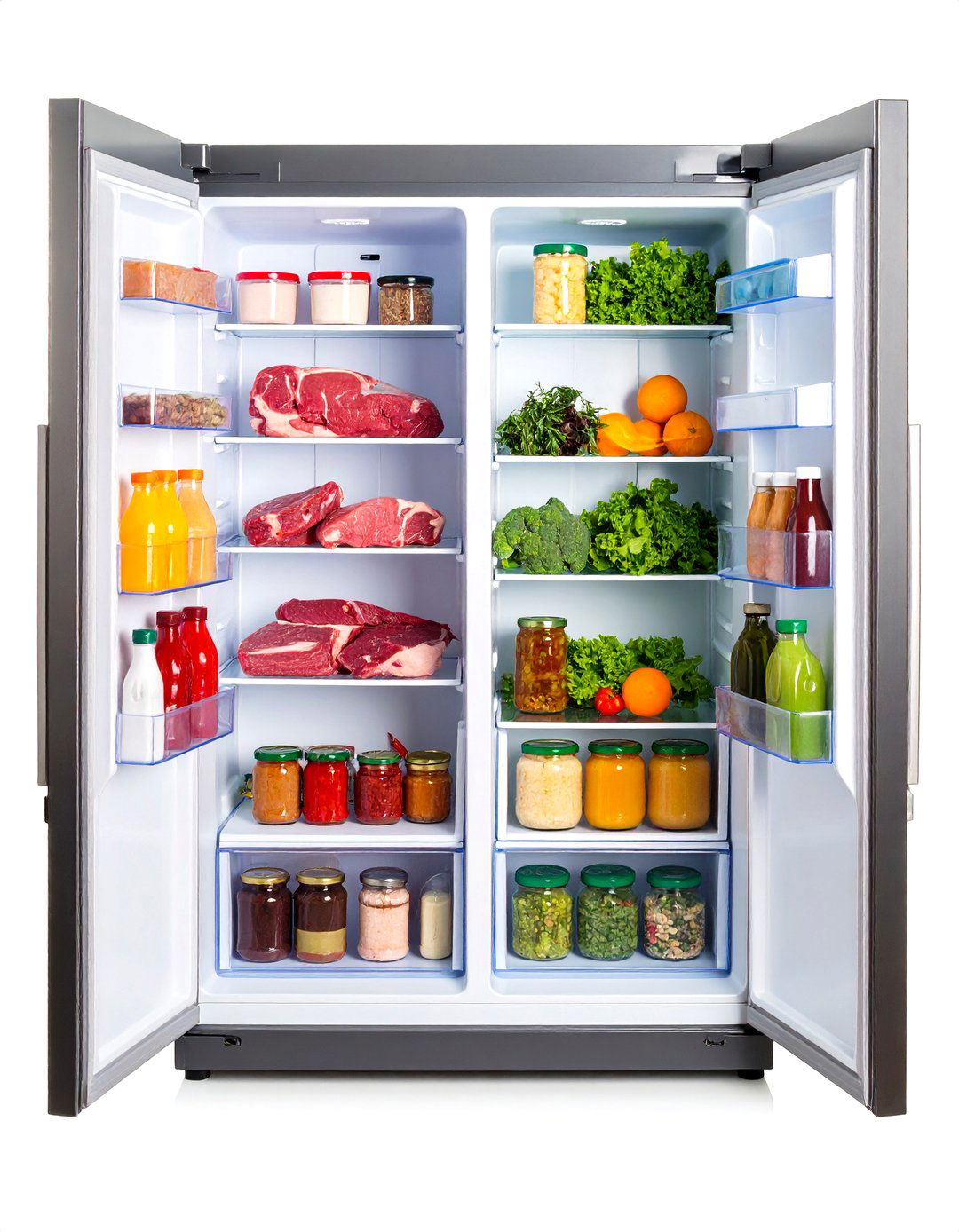

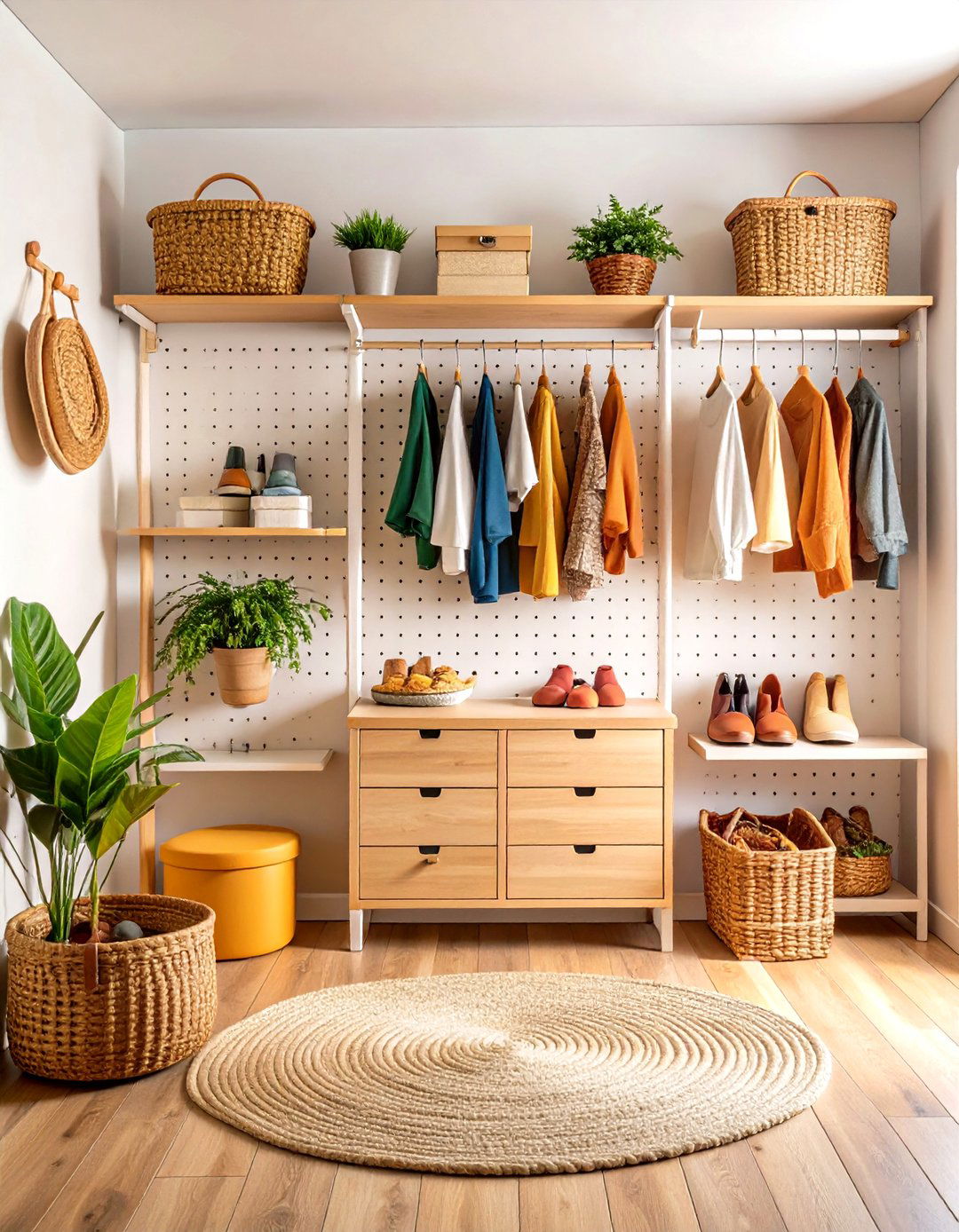
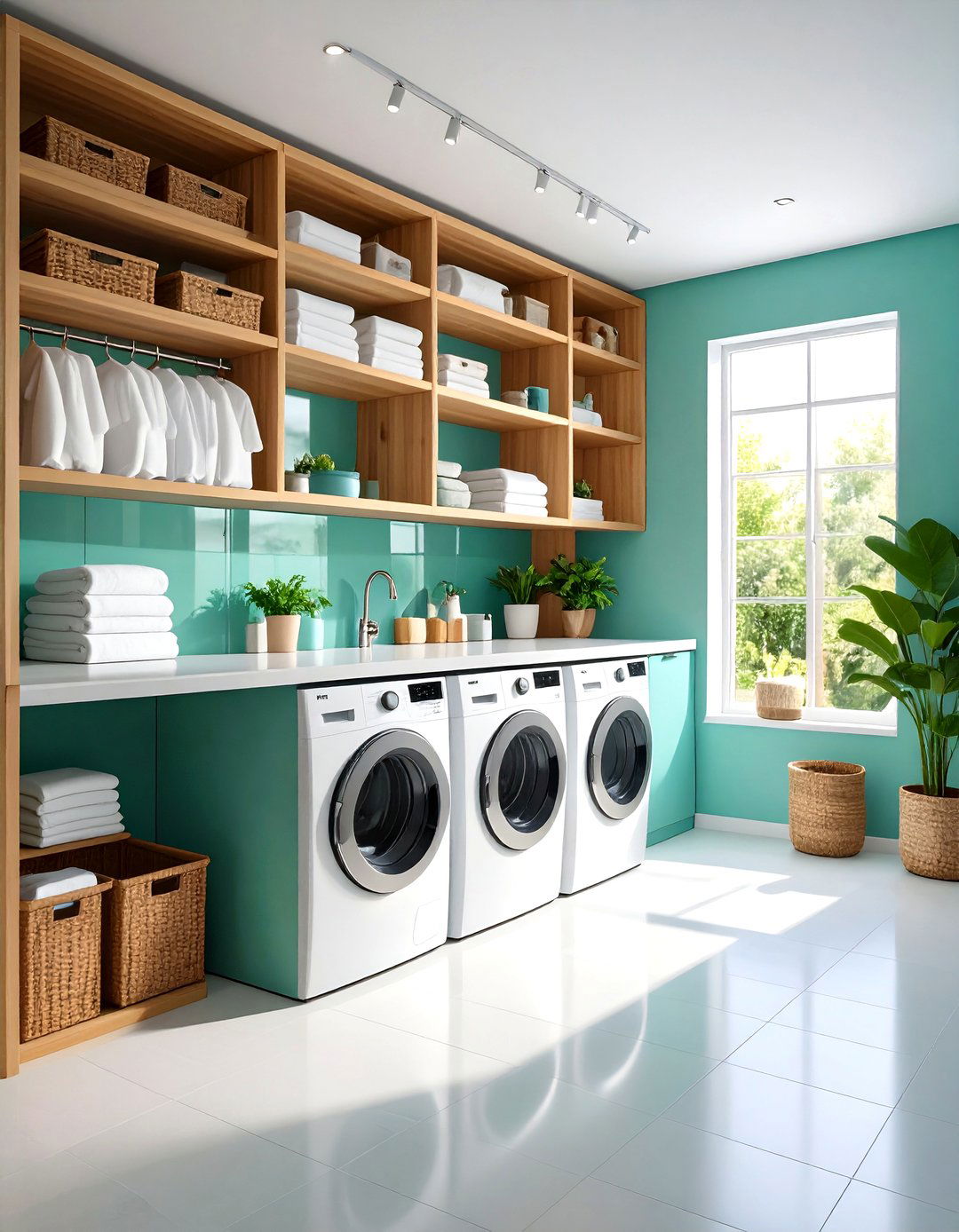
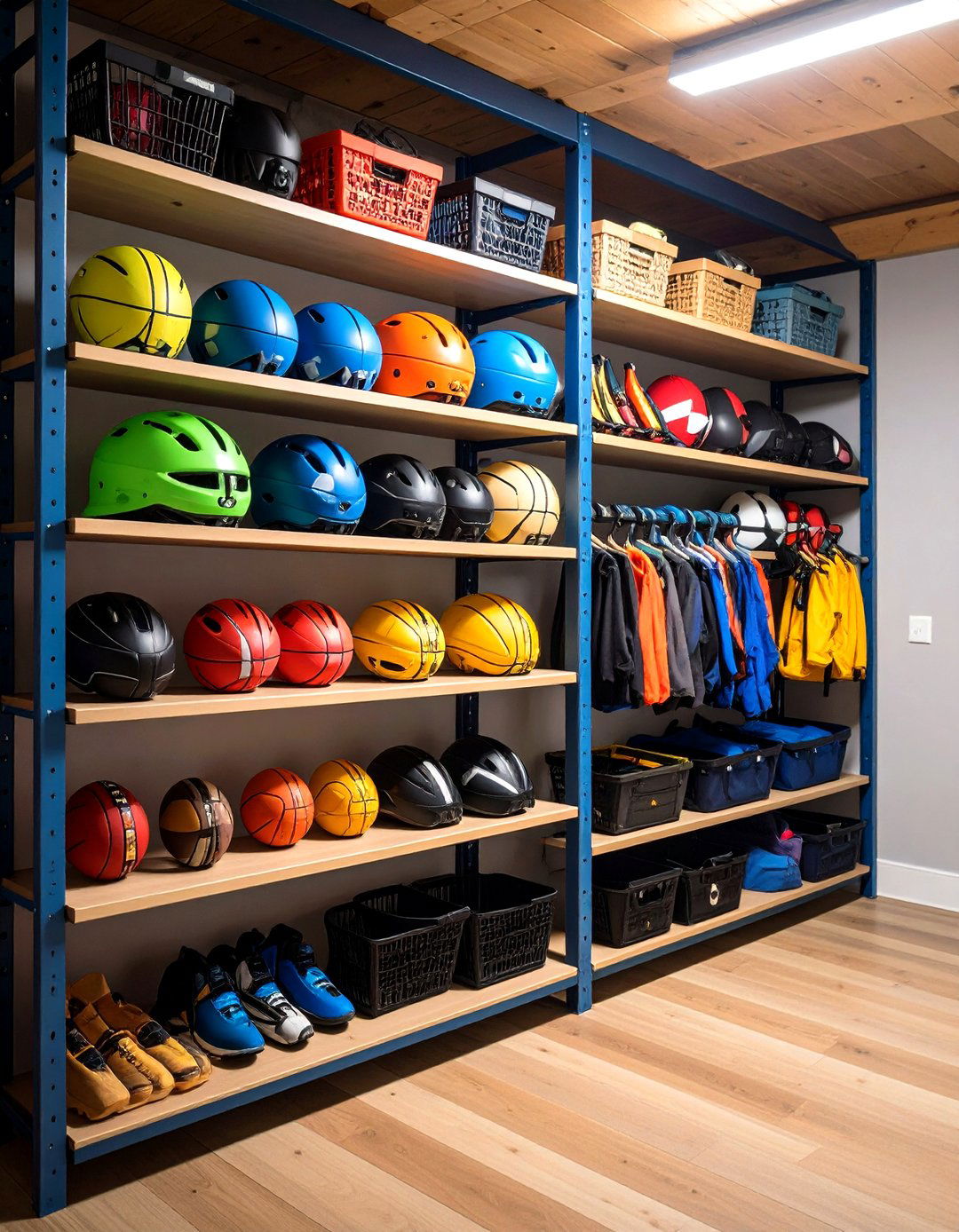
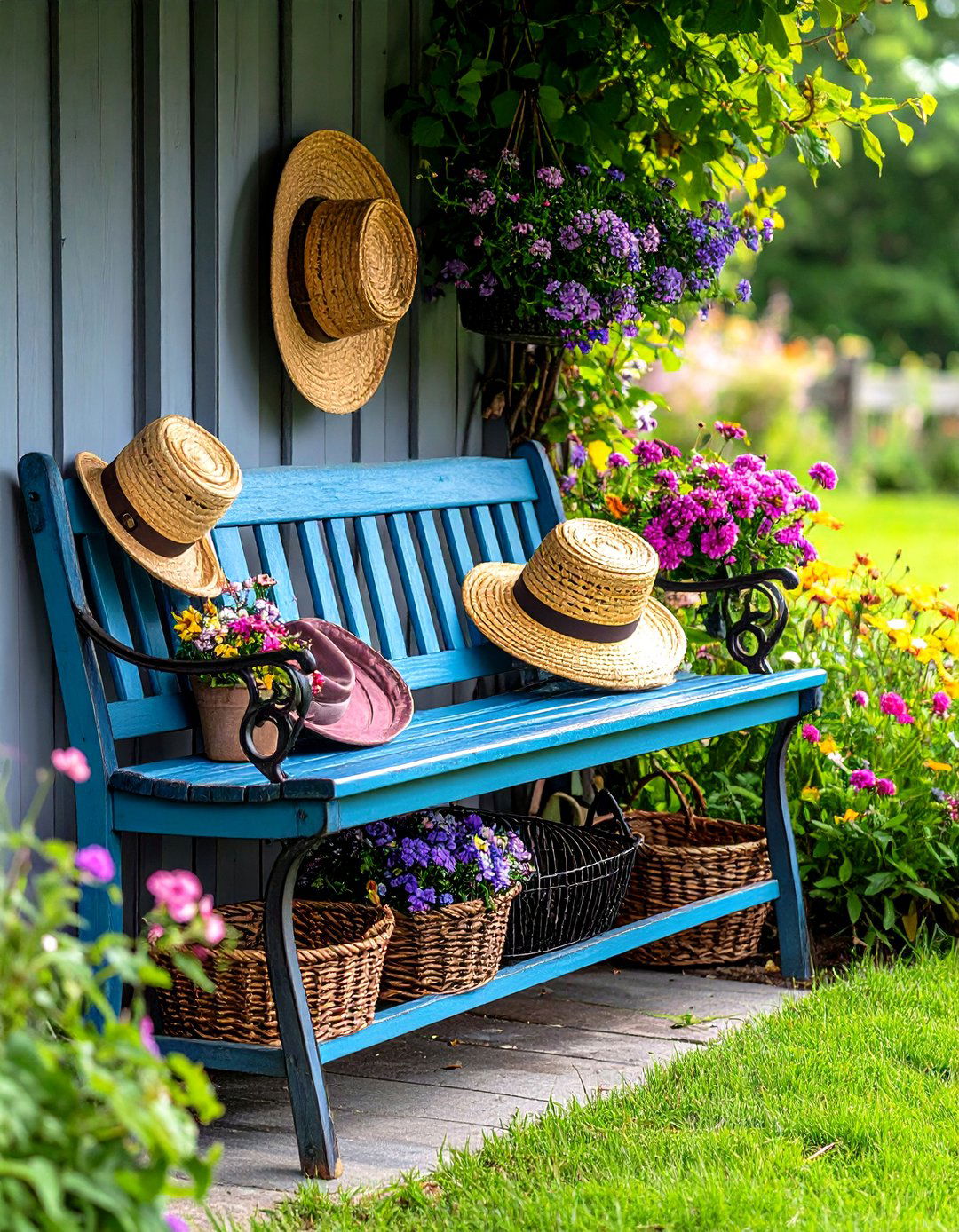
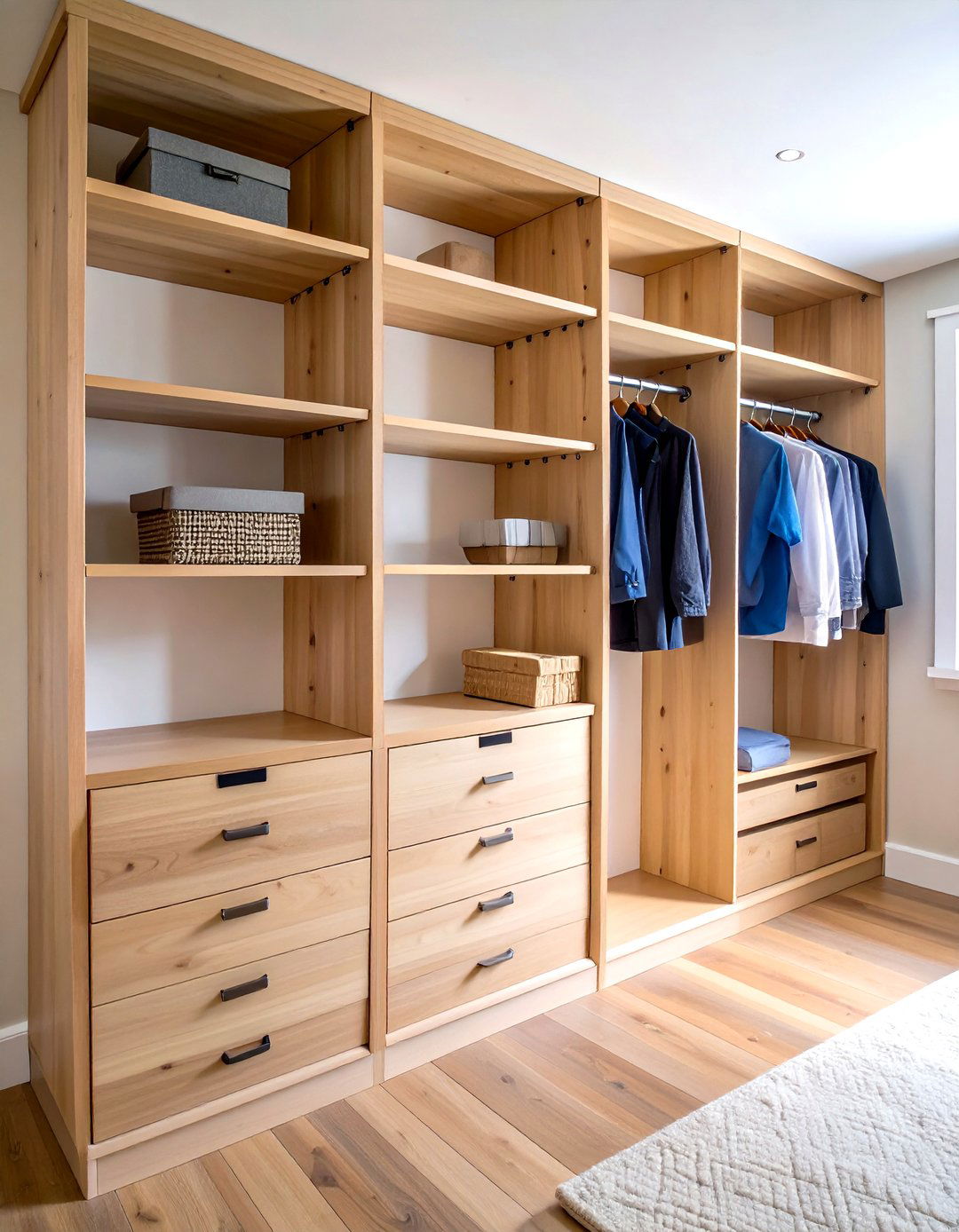
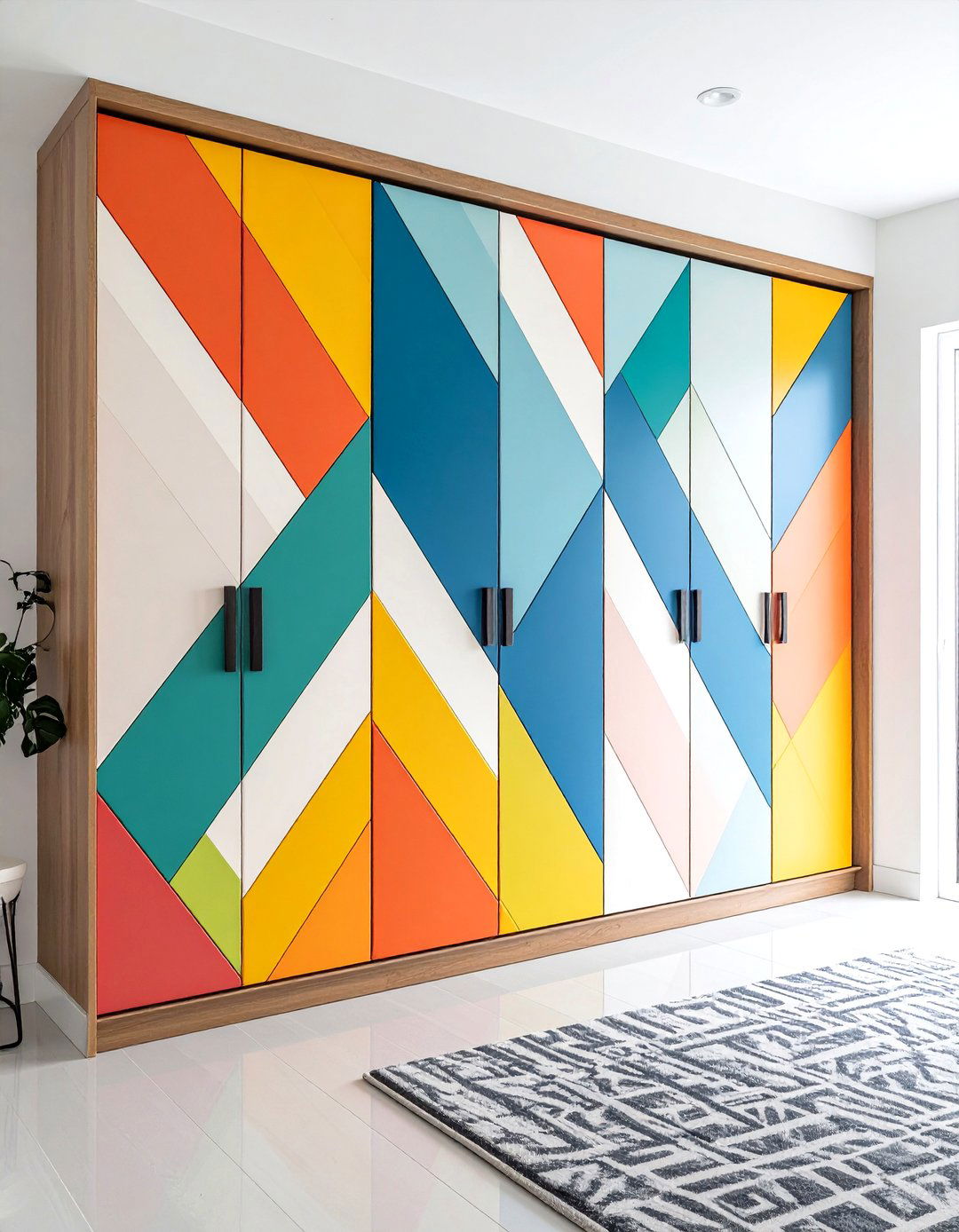
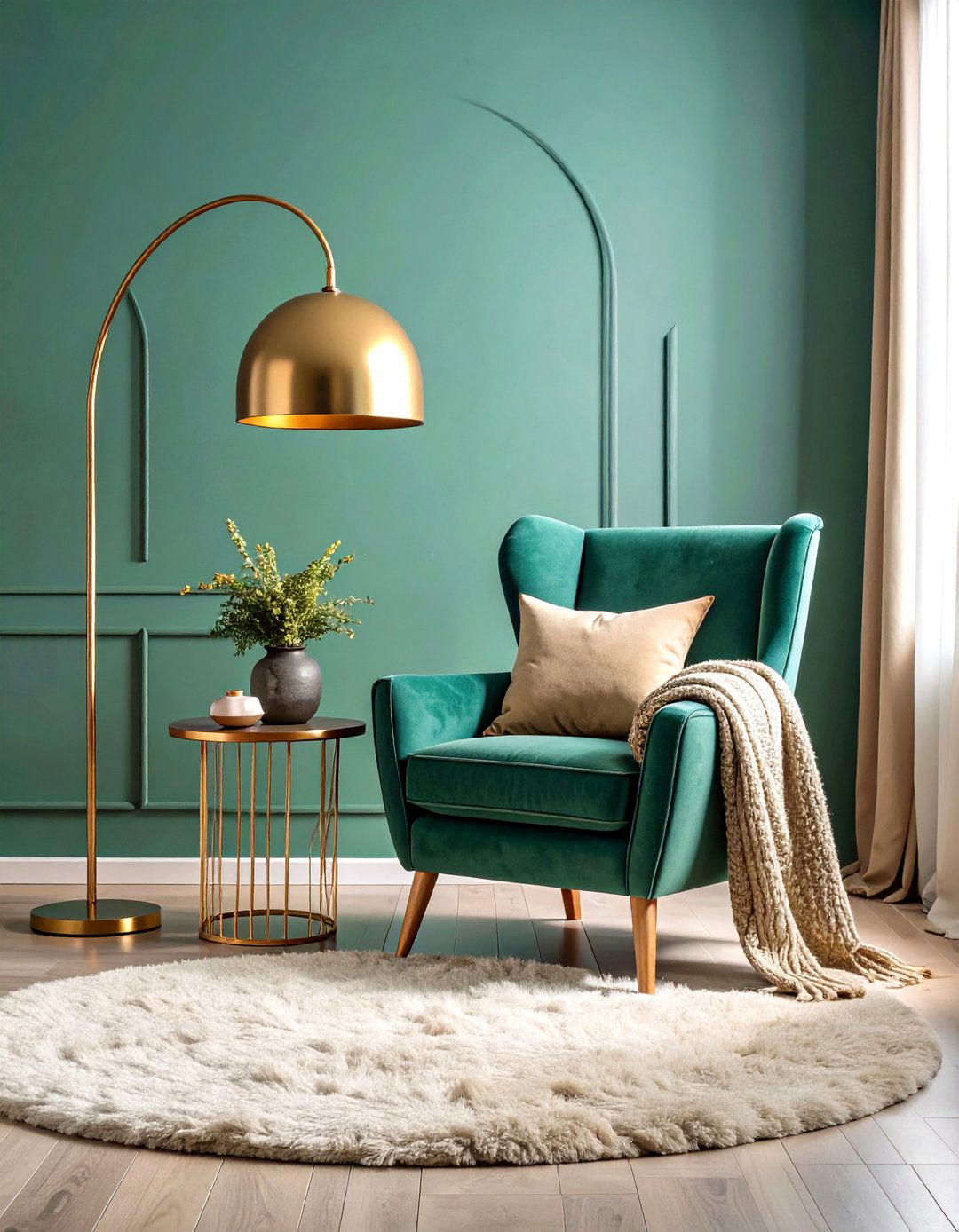
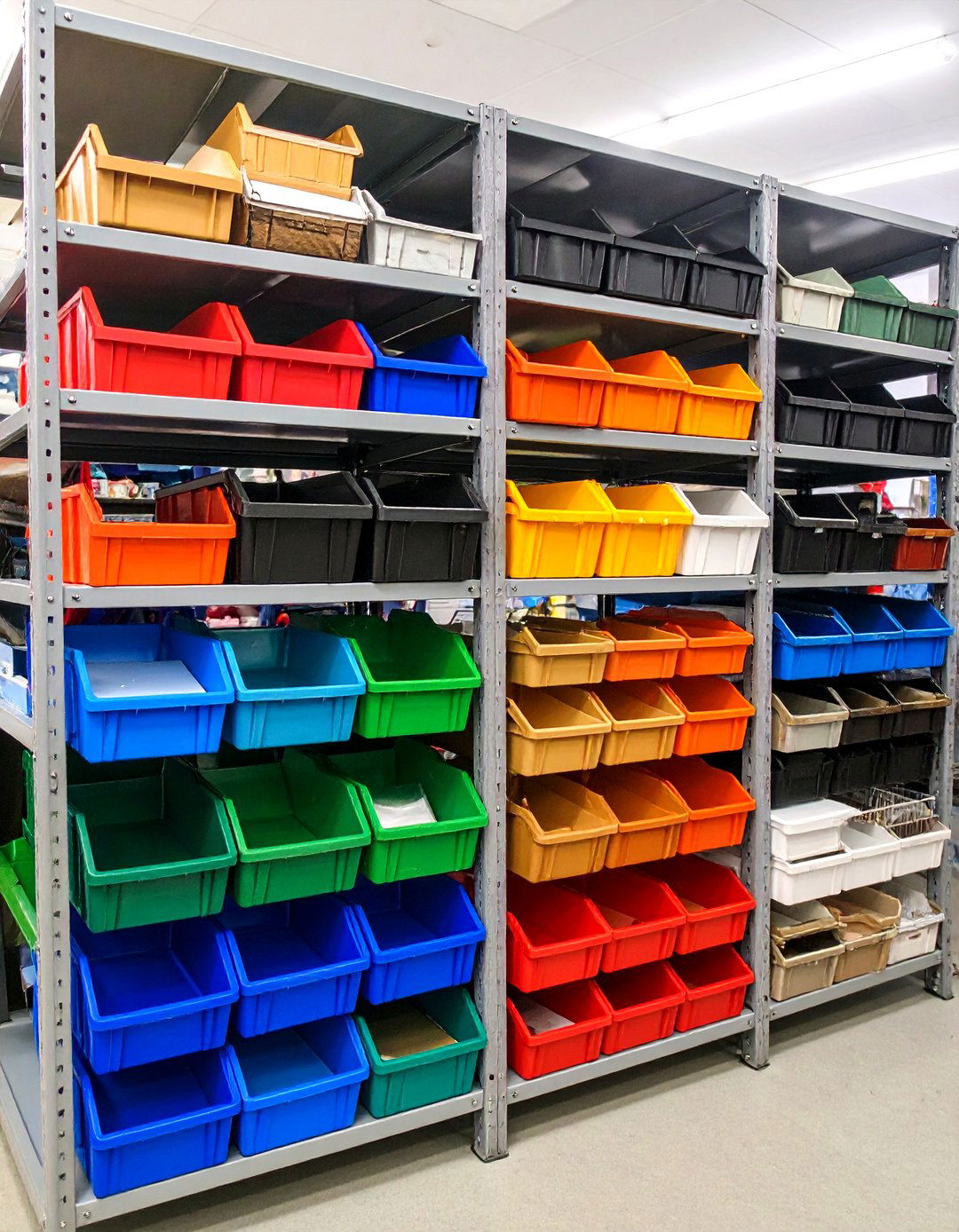
Leave a Reply